Unapologetic You (Notes from Sep 9 – 15, 2019) October 25, 2019
Posted by Anthony in Digital, experience, finance, Founders, global, Hiring, Leadership, marketing, medicine, questions, social, Strategy, Uncategorized, WomenInWork.Tags: #business, Amazon, books, community, content, experiences, finance, freedom, humanity, ideas, investing, life, marketing, medicine, Money, questions, reading, research, social, sports
add a comment
Every Sunday morning comes in The Profile newsletter to my inbox. It’s a great collection of what drew her eye on the week that focuses on profiles for individuals, good, bad, successful, unsuccessful, notorious, secretive, dangerous and generally people of all ilk. They’re almost all interesting, some more so than others. But yesterday, it caught my eye when Polina introduced the newsletter about her personal experience growing up and the first convention of being different. In reading it, I could see a bit of the problems and commonalities in many students I have seen over the years. And more than that – the ones who I’ve had the most enjoyment in teaching – were those that were unapologetic about who they are.
Many, as kids, were still working through it, but they were questioning the very thing Polina had described. And that’s of increasing importance as we get larger and larger webs of interconnected communities. The aggregate and the averages tell us how we should be or what you’re expected to score and how you fit relative to the rest. Rarely, if ever, does the crowd define any/every individual, though. The sooner we can all wrestle with that concept, the more comfortable we should be. Starting and doing a newsletter, for instance, should be as simple as writing what interests you. Yes, as it resonates and draws others in, there may be some curation to optimize what you decide to make it. And further, it’s probably good form to have some consistency in producing it (frequency/length/formatting) but that’s up to you, the individual.
I’d like to think that people want real, genuine thoughts, and less gimmicky writing. As an aside, that doesn’t mean people don’t consume if it’s not genuine – I just would venture that as soon as you break the mold on what APPEARS real (if actually not) would cause an uproar – as we see via YouTubers/Twitch streamers and even in some blog/vlog stuff. An act that is an act has an end, but an audience doesn’t then know what it’s getting. People don’t typically like change if it’s different, even if it may be “better”.
The best part of all of this? You get to choose what you want to do. Make the decision that makes you happiest and assess the aspects of your life that don’t. From there, create and prioritize how you may make the changes that lead you in that direction.
There are many people that I listened to over the course of this week.
- Jen Stirrup (@jenstirrup), Data Whisperer & created consulting Data Relish (Data Skeptic 9/6/19)

- Deploying data science and impacting businesses
- Last mile of analytics problem – interesting work and how to finalize to take to production
- Cleaning data properly, putting data into dashboards for proper business intelligence – how long does it take to get to reports?
- When you get reports, how long is your time to question (vs time to answer)?
- When you get reports, how long is your time to question (vs time to answer)?
- She takes them a health check and tries to check out where they are vs where they should be
- How clean is data, what are the real problems
- Microsoft doing ML Ops and how it can fit into support, how to look after something when it’s gone live
- Humans don’t want to appear stupid, so they want to be correct before starting
- Start with end in mine: what are you trying to do?
- Think about quality of data: still sees bad, missing data, incomplete data and things that they don’t use
- ML Ops examples of solutions – email management, how do you manage it
- Program can reach the end bound email, what it can do with the email (cs dept with automated service and pass hard emails to people)
- Good customer success can be a chat bot – limited and what it can do but proper
- Easing productivity issues – maybe tell me your phone number or putting in information to the chatbot to the crm
- More and more requests for serverless technologies – spoke to university about container technology
- Research can give the container with the paper and give to someone else to validate it
- REST APIs or serverless or others can glaze over eyes if talking to business but others, early adopters, jump on it
- Natalie Hampton, Founder/CEO of Sit With Us, Inc (Wharton XM)

- Talking about not having any background in coding, her art teacher pushed her to pursue it
- Wanted to build the app and just found people/classes
- Bullied and her art teacher was the one who would keep her door open for her
- Pledge to use the app – figure out that adults were using the app, as well
- Good for conferences, schools, colleges, workplaces
- Talking about not having any background in coding, her art teacher pushed her to pursue it
- Henry Ward (@henrysward), founder & CEO of Carta (20min VC 4/12/19)

- Carta helping private, public cos and investors manage cap tables, investments, and equity plans
- $147mln in funding from K9, USV, Spark and Meritech
- Originally tried a version of Wealthfront and Betterment called SecondSite – never got off the ground
- Met Manu, who introduced problem for financing infrastructure easily in private companies, providing liquidity and power
- Noticing executive half-life of about 18 months (say, $20mln – $70mln – then again from $70-200)
- Companies scaling from 150 to 500 and then after that
- People scaling linearly but companies scale exponentially
- If an exec isn’t scaling, they don’t say “Let’s hire a VP of FP&A to support execs weaknesses” but instead “Let’s replace CFO”
- Why is it true? – Any particular problem in scaling a company, can find someone that’s done it before.
- Founder is keeper of the mission – can’t replace that but job changes a lot more
- Smaller, personal relationships and people understood him for best intentions (but he’s a gunslinger and off-the-cuff)
- Less mulligans for him as they’re larger now – Jeff Lawson at Twilio had ran into someone for printed t-shirts and Jeff said “not a fan of color”
- His job becomes very specialized – story for employees, candidates, investors and press; 2 – right execs in right place
- Founder is keeper of the mission – can’t replace that but job changes a lot more
- Was sole decision maker in early stage and he still is but he said it was a liability
- Fewer day-to-day decisions to make but it matters more that they get it right and understand the context
- Investors thinking of markets in terms of size / how big could it be / what’s competitive advantage
- Happy going after conventionally small sizes but he looks for 1 of n – microstructure economics / territory will support multiple competitors
- If you win market, creates a defensive ability and that’s n of 1 – 1 platform (as ‘small’ cap tables)
- By owning a market of 1, you have the platform to dominate others
- Markets were too small – any market would run out of oxygen, so you need an org that can go further in places
- Data network effects could block all other entrants
- Have to be n of 1 market
- Have to have a business model that creates n of 1
- Needs innovation on customer acquisition model to quickly take over market share
- Happy going after conventionally small sizes but he looks for 1 of n – microstructure economics / territory will support multiple competitors
- In b2b – do you have a product that gives entry to commercial businesses?
- Product and technology advantage are short-lived – best companies own lines of distribution, not great products repeatedly
- Can go acquire great products and push them through distribution – both through M&A and through manufacturing
- Their biggest issue – tying all pieces of network together – 10k companies, 400 a month acquired, distribution to vc – managing electronic stock
- Law firms are power users of product but don’t have product that tie them all together – linearly
- They love services markets adjacent to what they do – commodity product differentiated by brand – funded administration, for instance – 4-9a analysts
- Paired a product team behind services group so the 4-9a runs at 70% margins – automate them to software
- Goal of R&D is how much value can you provide – go build it, otherwise they won’t
- Of value created, how much can be extracted – like keeping them as independent variables (when to extract)
- Early stage, add ton of value and then deliberately say they don’t want to extract much – leave a lot of consumer surplus
- Investor products: want to extract a lot of value but provide a lot of value and change these decisions (as markets mature, get larger)
- Of value created, how much can be extracted – like keeping them as independent variables (when to extract)
- Favorite book: Essays of Warren Buffett
- Economic discrepancy is enormous and how to bring wealth to more people – Carta mission for more owners
- Keeping investors up to date monthly and they love getting board members involved in the company (especially when they have 100 investors)
- Meeting with VPs or execs to do weekly meetings of sorts
- Carta helping private, public cos and investors manage cap tables, investments, and equity plans
- Joe Banner, President & CEO for Browns, Eagles (Wharton Moneyball)
- Discussing needing to find udfa at a time when it wasn’t sexy – needed talent, and cheap
- Only had 5 draft picks, late rounds mostly but had to fill a roster of 22 more
- Brought in all of the undrafted free agents and eventually had 20% playing, few starting also
- Making sure to prioritize talent over anything, not overvaluing high draft picks
- Culture of change with placing a system around high valued guys who others thought were low value
- Discussing needing to find udfa at a time when it wasn’t sexy – needed talent, and cheap
- Alina Trigubenko, Founder & CEO of Awarenow (Wharton XM)

- Holistic and integrative nutrition
- Corporate and enterprise customers – consumers within those that will do it
- Calm / Headspace – next level and how
- Shawn Burcham (@PFSbrands1), PFS founder, Open Book Management (Wharton XM)
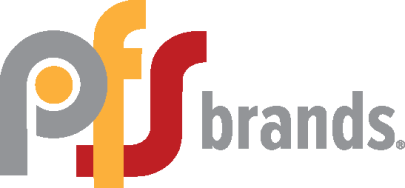
- Being from the midwest and going to Tanzania for farmers
- Keeps open books, shares with employees, prices with farmers
- Has 60% more return for farmers and will even return cash (after being above fair price and world commodity)
- Daughters played on same soccer team as John Sacks – read the book and was interested in changing to open book
- Tim Chen (@timchen82), CEO of NerdWallet (Leadership in Action – Wharton XM)

- Going through board – including AMEX former CEO, Jim (both from Series A investors)
- Board as governance body, weakness on exec team, okay with level of risk
- Initially believed he had to be smartest in the room but quickly realized the organization had to be working together
- Have to switch mindset from point guard to coach – from Dalio
- Investment committee – reasoning behind requests and resources, exec team reads through it and approves or not
- Executive team depends and changes over time, common for product dev
- Marketing, Product, Design, Legal, Eng, People, Content Heads
- Monitoring (leading exec team similar to parenting) – irrelevant for what you say, but seeing what you do is the arbiter of what’s going on
- Rewarding and punishing as consistent or constructive
- Culture for what is okay and what is not, role of hiring and inspiring an adequate team to grow company
- Maybe they don’t have right network for company, maybe can’t inspire
- Have to be technically proficient in their space
- Went from very niche product to being widely known once they started covering nearly all financial products consumers cared
- Seeing around corners to bring himself and the org up the hill and grow
- Surrounding himself with execs and others, getting named one of Top Workplaces in 2019
- Going through board – including AMEX former CEO, Jim (both from Series A investors)
- Adam Davis, CRO at Harris Blitzer Sports and Entertainment (Wharton XM)

- Discussing on-ice and on-court revenue for Devils and Prudential Center
- Coming and expanding Prudential Center into what it is now – leading entertainment center
- Up to 49 concerts recently, more than Devils games
- Data driving who wants to go to games, concerts and how that can be used to improve experience
- Rare as One Project, CDCN, Dr. David Fajgenbaum (Wharton XM)
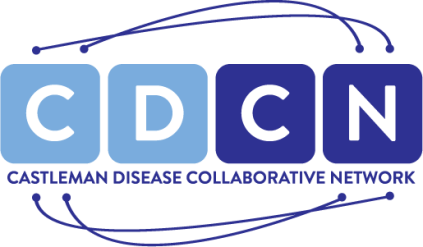
- Partnering with Chan Zuckerberg Initiative
- Collective network and how do you widely adopt principles for other diseases
- Partnerships with hospitals / care providers
- Having a different background between Penn and medicine, MBA – not great for those that don’t have 5+ years
- Nick Johnson (@NLJ1), Principal at Applico (Wharton XM)

- Author of Modern Monopolies
- Discussion of platform businesses and linear – trying to combine
- Encouraging linear businesses to, where applicable, try to get into platform business – didn’t provide any concrete details how
- 3-5 strategies compared to 5-7, where hard for CEO and board to stay the course without “being 1% of 1% of CEOs”
- Seemed to only mention Amazon, Airbnb, Walmart, Alibaba, ebay
- Kulveer Taggar, founder & CEO of Zeus Living (20min VC 5/31/19)
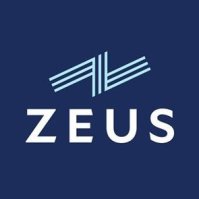
- Raised $14mn from Initialized, NFX, Floodgate, YC, GV and Naval Ravikant
- Co-founded Auctomatic with Stripe’s Patrick Collison and sold for $5mn
- Angel investments include Boom, Airhelp, Meetings.io
- Went to work at Deustche Bank and had a friend who had started a company at 15 selling computers, went to uni and offered a PR role
- Eyes open to entrepreneurship and SV tech start-ups, just before finals got to come to Bay Area and Google office
- Cofounder Joe was moving from SF to Palo Alto because his wife got residency – took weeks to try to get home rented out
- What would be the UX quantum leap for your problem? Joe’s problem sparked the idea
- Go to website, type address for your home and it gives you a price – you hit rent
- Inspired by Opendoor, Stripe’s 7 lines taking payments, lot more rental data
- Offer to sign lease with homeowner, gain data and solve the problem on demand side
- Inspired by Opendoor, Stripe’s 7 lines taking payments, lot more rental data
- All being impatient and learned that long-term horizons could’ve been better after hearing Zuckerberg/Bezos
- Being intentional with culture – lot of fun – 5 guys in 2 br apartment where things may have gotten too far
- Create collaborative environment
- When you rewrite code, have to redo processes as well in tech-enabled
- Acquiring and creating physical things – David Han at Instacart said thinking about output
- Surface area of inputs: Zeus has to be good at many things
- ID R/E, Pricing, Assessing, Designing, Furnishing, Marketing, Awesome CX, Marketplace matching
- Then, you can get the output
- Surface area of inputs: Zeus has to be good at many things
- Acquiring and creating physical things – David Han at Instacart said thinking about output
- Garry as having a conviction quickly – sees something that can change and invests quickly
- CoinBase – liquidity crunch and he wired money instantly and is supportive
- YC had an experiment funding teams w/o ideas – did it with Srinivas who’d done it
- Got a check w/o any idea (had done YC in 2007) and YC had scaled a lot
- NFC technology – was too early for scaling pmf and got into NFX with status app – status on your phone
- Felt like he’d spent 3-4 years of working on stuff and hadn’t gotten anywhere – taking market risk with what you’re building
- Instead, create a list of top 20 things by $ amount spent
- List of top 20 things by $ amount frequency
- If you have to ask whether you have PMF, you don’t – yanking your head forward with your nose, for instance
- Did 6 weeks of data experiments, conversions tests, 6 weeks of qualitative research talking to users, investors and r/e
- After 2 months of diligence and testing, partner at NFX sent him a test: In 6 weeks, get 10 homes on your market.
- What’s margin structure, is there a market? Strangers controlling home.
- Took about 4-5 months
- After 2 months of diligence and testing, partner at NFX sent him a test: In 6 weeks, get 10 homes on your market.
- Vulnerability strengthened his leadership, can’t be perfect CEO with all answers – motivated to go for culture
- Once a quarter off-sites, “if you really knew me…” building stronger connections, team bonding
- Work is where you have your professional self and you bring your whole self, manifests in itself
- Fav book: Midnight’s Children – historical fiction with India told; How The Mind Works by Pinker
- Change the bragging culture in tech – raised this much, vanity metrics and being counterproductive – not open or genuine
- Running into a bottleneck will use software to break through – automate something that may have been manual processes
- Michele Romanow, Founder & CEO at Clearbanc (20min VC 5/10/19)
- Wants to spend $1bn in 2000 companies for access to capital
- Founded SnapSaves, mobile savings platform acquired by Groupon and before that, Buytopia, one of Canada’s top ecommerce sites with 2.5mn
- Engineering, started a coffee shop on campus
- Figured out worldwide supply sturgeon caviar was down by 95% due to overfishing Caspian Sea – built to east coast for fishery
- Chefs couldn’t get product, so they had a ton of buyers – giant recession in 08 as 21 yr old in luxury good space
- Went to ecommerce space, didn’t raise funding, bought 10 competitors – controlled CAC and low
- Canada’s Shark Tank – Dragon’s Den – do 17 days of filming back-to-back, see 200 startups
- Had a father and son who wanted $100k for 25% equity – really needed $100k but realized she could do different deal
- Wanted to see Facebook ad account to make sure ROAS was what it was
- Companies spending a ton on early CAC
- Estimate that 40% of VC dollars go to Facebook and Google ad spend and marketing
- Had a father and son who wanted $100k for 25% equity – really needed $100k but realized she could do different deal
- Works for positive unit economics and spending a lot of CAC – any ecommerce company, 70-90% spend cash
- Subscription boxes, consumer apps/subs, b2b box even – can fund it for way less
- Data science time has to be very good – not lottery tickets, 6% is ideal for them
- VC as true risk capital – 0 to 1 risk, crazy piece of AI, solving disease, then it makes sense
- If you know channels are working and repeatable, should be able to get capital
- Comparison of Gates at Microsoft IPO or Lyft (50% ownership vs 3%)
- Just celebrating when founders give up control / piece of company
- Milestones for products, hitting 1mln users, etc…
- Funding
- Antonio Garcia Martinez, author of Chaos Monkeys (Launch Pad, Wharton XM)
- Comparison of Seattle and SF and NY
- SF being loud, Seattle being quiet but not necessarily huge, NY has less loud but big
- Good mixture of deciding where to be
- Comparison of Seattle and SF and NY
If you found this interesting, share with me and others:
Inference Isn’t Just the Data (Notes from Sep 2 to Sep 8, 2019) October 14, 2019
Posted by Anthony in Automation, Blockchain, Digital, experience, finance, Founders, global, Leadership, marketing, questions, social, Strategy, Uncategorized.Tags: #business, community, content, experiences, finance, Google, humanity, ideas, life, marketing, questions, reading, research, social
add a comment
Internet has enabled more data, but that’s not necessarily a good thing for most. I’ve seen this for all ages – somehow, this deluge of information provides a glut where, instead of doing more research (because more is available), we seem to do less. There’s a laziness that has arisen, where the least amount of work is done because the sources are abundant. And this is problematic. And emblematic for what has transpired over the last decade with the web 2.0.
I say that it is problematic, but I do suspect it’s actually created a ton of wealth. The opportunity of doing a small amount of extra effort to sift through or provide a more nuanced/researched view in order to extract a ton more value from a wider audience is awesome. That’s never before been more evident or available to a wider group of individuals. Especially when, with nearly the world online, communities that would normally (past) not have had markets, all of a sudden have vast reach – internet enabled the connection across many neighborhoods/cities/regions/countries/continents. A magical thing for those that wish to do the research, put in a bit more work, and most importantly here, share the work for the public, at the cost of potential exposure to those that disagree or have reached a different conclusion.
I, for one, am all for this abundance. A sharing of differing opinions and agreement or stories of anecdotes allow us to bring more data into the fold. That should enhance any inference/analysis on the information brought to the table – and real applications, at that. However, like many good things, there will be a small portion of people that are bad actors or looking to just ruin the good derived from a community or topic. Also, may see plagiarism or curation that doesn’t really add anything – worse, monetizing the curation of something where the value isn’t created. For 100 people, 1 bad actor would still be 99% good. 99.9% of 10,000 people is 10 bad. That’s a fair amount, but when you have a commonality among the people where some join for the purpose of providing poor information, or unproductive data or ruin the experience for the rest, it can tear it apart. And that’s becoming harder to gauge, I’d imagine (rise of community managers and insertion of social data and other related ‘checks’ inserted).
So that I can get off this little soapbox, I wanted to bring attention to those that have so far only consumed information – please share and try to bring some new insights. It will hopefully bring in a new person that sees it – refreshing eyes can be useful on new information- we all have different experiences. And for the bad actors, hopefully there’s an end goal that does provide some value – it’s tough early on but the right communities invite opposing views to allow others to draw conclusions. Inferences aren’t merely opinion on the shallowest, easiest data to gather, but rather a collection and reflection on a set that may agree or collectively provide information to allow a deeper understanding.
Enjoy the notes I had from this week! I do suggest going through the a16z podcast 16Min on the News (for news from the week).
- Apple Card, BEC Scams Fed (16 Minutes on the News #7, 8/25/19)
- Became available this week – partnering with Goldman Sachs and Mastercard coated white and titanium
- Apple moving into financial services, no typical sign-up fees or late / overdraft fees
- Apple as reinventing existing categories repeatedly, so even changing basic stuff like making the transparency feature
- Reminder of SMS and Innovator’s Dilemma (making money in core with new business on horizon because you’d cannibalize yourself to enter)
- B2b2c as incentivized to grow – GS not a big consumer lending (Marcus last 2 years), but can drive growth
- Offering 3% cash back when purchasing from Apple, 2% with Apple Pay, 1% from card – incentivizing payment mechanism
- Interchange fee is expensive but if they become default payment mechanism, they can pivot
- Money as emotionally driven vs functional and product – making sense in rational isn’t the move
- Nobody wants to budget just as nobody wants to diet – instead, automate small financial decisions to help achieve better outcome
- Self-driving money: not having to make the decisions to optimize your financial life (too high friction or don’t know about them)
- GS with $350 to acquire customers – traditionally, credit cards have been onerous
- Future: everyone should have access to payments via unsecuritized debt without great credit
- People that are creditworthy with great credit scores but those that never pay bills and have bad credit
- Overly negative in a different sense (ones that are almost wealthy that end up getting in trouble)
- Future: everyone should have access to payments via unsecuritized debt without great credit
- BEC scams – business email compromise
- More than doubling each year – big deal on security
- Sending email messages to send money – better technical systems are now just asking individuals (social eng as most effective form)
- Became available this week – partnering with Goldman Sachs and Mastercard coated white and titanium
- Ben Lorica, Chief Data Scientist at O’Reilly (Big Data Beard 8/13/19)
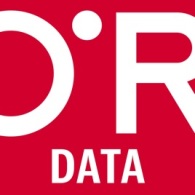
- Future of Big Data with O’Reilly’s
- Would take handle “5g” or something related for the future
- Collecting, aggregating and normalizing big data now – business intelligence reports, simple averages or trends
- What else can we do? Improve or automate processes/workflows or extract higher revenue from systems
- Natural evolution and what are the bottlenecks for the AI / ML processes (are you early stages, models in production?)
- Quintessential marketing for hype but developing a use case for the application
- Tools for labeling data, data programming
- Mentioned how to do ML with demo and user cases for interacting by Product Managers – SF O’Reilly conf
- RPA with proper use case and proper implementation (close to the task)
- Successful organizations have figured out how to bridge that gap – technologists with communication/collab on business side
- On open source side, TensorFlow and PyTorch as top 2
- Data science side – announcements about internal data science platforms to work together (share pipelines / features / models) openly
- DataBricks, one company that he advises, also works on delivering enterprise data science platforms – IBM, cloud vendors
- MLFlow as DataBricks’ for managing and tracking ML development life cycle
- Monitoring alerts for retrain model, feature drift, deploy model against live data (simulating on live data but not production)
- Model governance as tools that excite him – highly regulated industries like banking, financial services – what models and metadata
- When was it last touched, trained, on what data, etc…
- Managed services based on open source – managed Spark, for instance – minimal log in
- If I have a better model but worse data, the better data should win, and that’s what drives competitive advantage
- Big push toward hardware space – training at the edge or even model training in general – specialized hardware for accelerating DL / ML
- More researchers working on data cleaning and data repair
- Snorkl from Stanford researchers – easier for more people to use the product
- Reinforcement learning – he’s most interested in UC Berkeley’s RISE Club’s REY (sp?) – distributed computation platform in C++ low latency
- Building on top of REY as Odin – can cover 80% of Pandas, faster and other libraries
- Frank, Chief Business Officer at Edge Sports/Analytics (Wharton XM)
- Becky Miller, co-founder & CEO at Tinyhood (Wharton XM)

- Wanting to connect with other supermoms and doing a community
- Deciding to do parenting classes online and helping subscriptions
- Josh Phifer, co-founder at Barn Owl (Wharton XM)
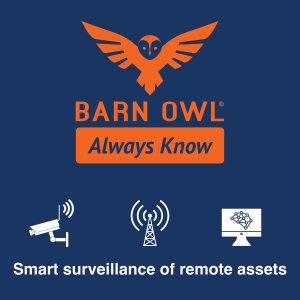
- From Wyoming / Nebraska ranching, went to Wharton
- Starting with water sensors but wasn’t quite working or gaining traction, thought drones would work initially
- Pivoting as they were running out of money to find a product – camera with satellite / cell connection from China sourcing
- Bootstrapping about $175k from friends and family
- Camera use case – all kinds of agriculture applications for checking – can send picture via app, timed or on certain amount of times
- Solar and battery powered
- Obsession over the problem, not marriage to a solution – feed the need
- Initial app created with Bubble.io, introduced at Wharton – low code solution with logic programming
- Hired on an employee – electrical systems who could help with building out full app and logistics
- Mark Nathan, CEO of Zapari (Mastering Innovation / Wharton XM)
- Discussion of moving from engineering, building stuff to the medicine / insurance field
- Not necessarily working on analytics, but collecting and informing consumers and other stakeholders
- Doesn’t foresee regulation as a hindrance, since what they’re doing isn’t predicated on that
- Primarily started with SoCal, Medicare and getting adoption from pharmacies – assisting nurses on customer service end with their call center, ex
- Not set up to deal with pharmacists or customers, can alleviate this and help with people fulfilling prescriptions
- JD Long, VP of Risk Management for Renaissance Reinsurance (Data Framed #37, 8/27/18)

- Starting in R stackoverflow asking questions / answers and building the community with Mark Driscoll
- Graduated in undergrad, starting masters and asked where PhD’s were going (of Agri Econ): answers AMEX
- Due to SAS and mainframes, UNIX, R-Cran hadn’t started
- AMEX was explicitly recruiting in 1996 for these economists because of modeling, coding messy data, crop insurance, regression (econometrics)
- History of cultural agricultural yields, weather and prices from before 1996 – which was agricultural crop insurance start
- Simulate and stochastically getting a bunch of results that give you an idea of the distribution of the model
- He does very little predicting of what may happen next year – looks at shape of distribution for the following year
- Looking at improbable 1 in 1000 results that may be possible in that distribution
- Book: “How to Measure Anything” – what’s the highest and lowest estimate
- Risk vs uncertainty: Risk is understanding underlying distribution but not sure what you’ll get; Uncertainty is not knowing the distribution
- Flipping a coin has risk – can model the probabilities if you know the coin, but uncertainty would be not knowing if the coin is loaded / biased
- Auto insurance is type of product that is mostly risk, less uncertainty – predictable patterns, historical distributions and tail events
- Terror events – historical categorization of events but no reason to see world events as drawing from the distribution of that
- Unstable random geopolitical events, component of risk vs higher uncertainty
- Terror events – historical categorization of events but no reason to see world events as drawing from the distribution of that
- Reinsurance with risks that can be correlated based on underlying physical relationships, such as homeowners insurance in NYC should be correlated
- Hurricane Sandy would be something that hits everything there
- P&C companies with casualty claim could be connected among multiple companies
- Legal change in framework could cause claims to increase 15% – have to understand the correlation when aggregating data
- 2 distributions can be added or correlations using copula – artifact of some other process
- Model data should be containing it already but this is only way to insert
- In 3000 BCE, Babylonians had disaster contingency – loans didn’t have to be repaid if losses happened for certain events
- Edmond Haley (Haley’s comet) created modern-style mortality table in 1693
- Lloyd’s coffee house emerged for shipping news and buy shipping insurance (turned into Lloyds of London – marketplace now)
- 1992 – Hurricane Andrew recharged after ripping Florida and hit Alabama and Louisiana – big catastrophe for reinsurance companies
- Hurricane reinsurance was a gentlemen’s game – big contraction of market after Andrew, filled by crop of reinsurers in Bermuda
- Became a quantitative analysis market after this – turning point of reinsurance, reasonable proximity for US and capital-free
- Heuristics that make certain assumptions for the modeling of both finance, insurance
- More effective models for sharing and coming together with actuaries, risks and methodology
- Data science examples, actuaries methodology that would be working together (GLM combined with understanding on actuary side)
- If asker of question made it easier on the question answerer (on example for Stack Overflow)
- Incomplete code or maybe not syntactically right so the answerer cannot answer it properly
- Empathy for the receivers of your opinion or problem or otherwise
- If doing analysis to equip underwriter for a deal – what information does the underwriter need to be well-equipped for negotiating their deal
- Influences and drives thinking of how to serve that analysis / information
- “Hacking empathy”: from Agile development method would be User Stories
- Hugo is a data scientist who is trying to understand X. He needs this tool to do Y so he can understand X.
- Forces the person to do this to think about that user or other person
- Think about who is consuming it to give nudges or reminding someone – doesn’t think that way
- At DataCamp, how active or users or learning profiles that they are aimed at
- Designing for average, you design for no one from podcast “99% Invisible”
- Give target audience a name to relate to them; multidimensional space for ‘tyranny of mean’
- If you have 3 dimensions of human body (leg length, height, hand size, arm length, etc..)
any 3 with a small margin of error will be merely 6% of pop
- If you have 3 dimensions of human body (leg length, height, hand size, arm length, etc..)
- Hugo is a data scientist who is trying to understand X. He needs this tool to do Y so he can understand X.
- Where is market opportunity? Met with a headhunter in space.
- Deep learning and AI for media and ink spill – interesting and have potential for revolutionary changes.
- Former guest Jenny Bryan who talked of attempting to get people out of Excel – massive movement there, he believes
- If we don’t ask “Does our analysis change the outcome?”, we can do infinite analysis since it’s all that we don’t know
- Never drive organization. Leaders should have candid conversations about if the research is going to change the answer of the decisions.
- If it’s a no – why put resources toward it?
- What’s the next best simplest alternative? Not comparing to doing nothing.
- Deploying a complicated model should be compared to old forecasting method or cheaper, faster one. Is the added complexity worth it?
- Hugo tells them to deploy basic baseline model, do 20 min of EDA and try to make own prediction. Then test the models against that.
- In public policy, effectiveness isn’t against doing nothing, it’s the next best. Benchmarks are too often done at base.
- “Plot your damn data”
- Never drive organization. Leaders should have candid conversations about if the research is going to change the answer of the decisions.
- Matt Lieber, cofounder & President of Gimlet Media (20min VC FF030 1/15/16)

- Produced radio shows Fair Game and On Point, worked as a management consultant at BCG
- Radio producer was his lifelong dream after being a radio head growing up
- Met Alex Bloomberg after his MBA and consulting, who is the cofounder – left to go learn business side
- Distribution to big audience, too many gatekeepers, market-by-market he had to go to program directors to pick up the show
- Exciting thing, creative, ambitious work was happening there
- Constraint breeding creativity – raising a series A
- Had launched 3 or 4 shows in first year, scaling to some audiences and had worked
- Revenue from start, ads in the beginning – VCs didn’t want to hear about those
- Believed they could self-fund through profits, growth with revenues – don’t need to dilute, maintain control
- Would need to build up the company after building some shows
- Keeping small culture – fairly strong but not explicitly communicating it yet
- Behavior of leadership and design of signs – started Gimlet Guides around 25 employees for onboarding
- Gimlet Guides are the mentors for establishing new employee onboarding – lunch once a month, questions
- Behavior of leadership and design of signs – started Gimlet Guides around 25 employees for onboarding
- Wanted to get a partner for VC who was aligned with the vision, experience investing in media for different return timelines and dynamics
- Sea of change of how a whole generation will consume radio and shows
- Simplest, direct way for market – size of radio ($18bn+ in US in advertising alone) – digital for mobile media market
- Consumption shifting to mobile – advertisement doesn’t work (Gimlet is ~80% mobile)
- Deciding how to make new shows? Question from someone
- Mentioned “Surprisingly Awesome” – people want to be entertained and learn something, recent ep was interest rates and economy
- Teamed up with Adam McKay and Adam Davidson for it
- Learning, listen and come away with some understanding, a host to connect with and is there a narrative
- Mystery Show, Reply All, Startup and Surprisingly Awesome are all the biggest shows
- Favorite book: Great Plains by Ian Frasier, didn’t have an emulator
- Challenging aspect of creating it: scaling editorial where you create a system to grow and teach editorial material
- Most excited about the next shows – this case, a podcast about podcasts called Sampler
- Best advice: Be nice.
- Abhinav Asthana, Founder of Postman (Wharton XM)
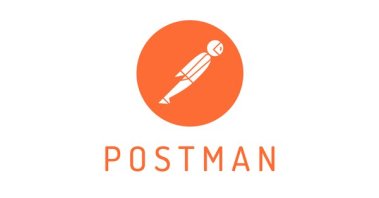
- Talking about why he loved building more than what he had done previously
- Community for that
If you found this interesting, share with me and others:
Your Experience is Your Own, Only (Notes from Aug 19 to Aug 25, 2019) September 10, 2019
Posted by Anthony in Automation, Blockchain, Digital, experience, finance, Founders, global, gym, Hiring, Leadership, marketing, NLP, social, Strategy, training, Uncategorized, WomenInWork.Tags: #business, community, content, experiences, finance, ideas, Jobs, life, marketing, Money, questions, reading, research, shopping, social, Time, training
add a comment
I’ve been considering more and more about how my experiences are only mine. Especially when I feel like I don’t share them often. Working so much but not always discussing it with people outside of work (re: almost never). I was reminded of this while I met with a family member who I see roughly once a month or so. When she asks how work is or I mention I’m busy on days when she wants to meet, it often came with a “busy with a meeting at X but can do Y”. Never more. And almost always, I ask how her work is, and she divulges. So when we sat down for dinner and she point blank asked “I have 2 things: 1. Can you help me with something on my new phone? and 2. What is it actually that you do?” I chuckled because generally I don’t care to share that information – I really enjoy valuing start-ups and learning about the space / tech / finance / education changes, but other than high level stuff, rarely does anyone want to hear me talk extensively a la a podcast episode deep-dive or something. They don’t see the relevance, other than it being exciting for me. Same with when I was advising, same since launching the fund and all while working on project deployment in data science for others.
I strongly suggest reading through Colson Whitehead’s essay here about his version of New York City. How it’s interpreted. essay here
Another thing I read through today was Farnam Street’s blog post on asking seemingly simple questions that may be defined or determined by our experiences with those concepts. An example he uses: “What is a horse?” Try to think how we may answer this.
Power questions
- AI in the Past, Present and Future (BDB 7/16/19)
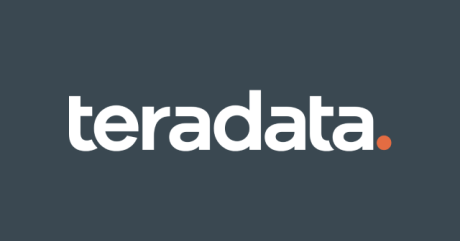
- Rod Bodkin, Tech Director at CTOs office in Google
- Was with BigDataAnalytics, bought by Teradata and grew it from there
- Grew Google after seeing the field advancing quickly, state of the art as evolving
- First people to put Hadoop into production – Yahoo was too scared, single algorithm took weeks at the time
- OpenAI put out state of art compute paper – 4 year paper, 300k X computation (double every 3.5 months)
- For Google, evolution of cloud in the enterprise is a big deal – consumer side of Google as leading the way
- Can just put data into BigQuery because of capacity and accessibility of data – increased production 4x on data science team
- Big investments into Anthos – open source tech to enable cloud-native services in different clouds, GKE (Kubernetes)
- Edge TPUs as 100x faster to compute a model vs traditional mobile CPU – TPU as accelerator chip for DL
- CPU is completely general so less efficient
- GPU has a boost over CPU but behind TPU accelerators (starting GPU chips, Tensor unit)
- Kaggle Days and Google IO for cloud Pixel modeling and AutoML performing very well
- Herrari’s book – 21 Problems for 21st Century
- Rod Bodkin, Tech Director at CTOs office in Google
- Tricia Han, CEO of Daily Burn (Wharton XM)

- Community of like-minded fitness fanatics
- Live 365 – 30min shows on working out, regulars
- In survey, millenials said fitness #1 and health/wellness at #5
- Fitness had about happiness equal to making $25k more
- State and Future of Robotics, ML and Digital Celebs (Venture Stories, 8/8/19)
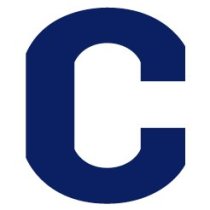
- Michael Dempsey (@mhdempsey) – partner at Compound
- Read, Listen, Write, Talk – Cunningham’s Law – share something with a strong opinion is likely to get responses
- More value when shared publicly
- Robotics, ML as cascading forward – robots broadly, initially – types, how to make them intelligent (2013)
- Drones, hardware platform (DJI as leader), space and now as unsupervised or self-supervised learning
- Deep dive on innovation for what he’s spent the last year or two – investments, as well
- Drones, hardware platform (DJI as leader), space and now as unsupervised or self-supervised learning
- Women’s health as growing market for fertility and experience layer in healthcare system
- Higher-end service around egg freezing (but was shattered by Tia founders), IVF or embryo screening
- 2 investments for him already in the space, maybe more after
- Strategic robot acquisition for Amazon, why now? Major companies in the space – he’s punted in that space, more investors.
- Didn’t see meaningful differentiation in the space – didn’t see a company that had that from an investing side
- Food was where he saw robotics as consistent – grew up in the industry
- Really easy to get pilots but not for revenue – wants full-stack robotics company
- Robots taking over entire industry – automated X / Y / Z (rebar, construction robotics)
- Front of house and back of house retail (analytics, stocking)
- Weird robot applications (in-home, manicures, old person help)
- If company is built on algorithm being best, company probably won’t survive
- Must talk to people doing operating – not just reading
- Self-driving cars – spent time with Daniel Gruber, discussing local maximum and rules to write
- If you can drive in NY, you can drive in SF, LA, etc…. 2007 DARPA challenge Waymo / Tesla / Cruise as result – path-planning
- Intelligence approach – what are incentives / agents to accomplish in a car for end-to-end approach to scale
- 1 model to move them all – enough compute that model can solve it (DL is direct function of this, for Google)
- Investment in data labeling space – more people moving into production requires more people getting good data and filtering data
- Larger data builds where it may cause $50-200mln per year to label but 50% is useless
- Environmental impact and thinking about it – consolidating data but into better (CartaAI and SkillAI)
- DeepGram end-to-end audio inscription – 80-85% can be good, but if you mess up some key words in certain industries, it’s more expensive
- Voice side, horizontal players are pretty good – if x% of users will have same questions, simple workflow or algorithms
- GANs and new generation of faces – Disney and animation nerd for a while – power of IP on agencies, CAA for example and Marvel
- Stories through animated content, Robot Chicken, others – Robert Dillon – bringing in GANs
- Watching live action is watching someone else’s story whereas an animated one brings you into the story
- Trusting the people that have been given permissions – Reddit or being anonymous
- John Roese, Global CTO of Dell EMC (Mastering Innovation, Wharton XM)
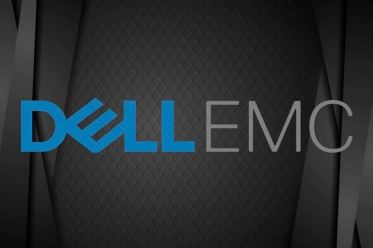
- Talking about the 20 year vision to be autonomous but incremental parts until then
- Driving assist, improved AI in driving, maybe geofenced before autonomous
- Autonomous vehicles as source of innovation – sensors / LiDar very useful for other industries but too expensive
- Had talked to studios about virtual studios or conferences – expense should come down with auto
- Vast problems with uncontrolled or unconstrained problems – already have fully autonomous warehouses or geofenced areas
- Interested in bio feedback as input to AI or MI systems
- Used example of video conferences with sensing stress levels – clearer audio, accent correction, more people = more stress
- Cars already using bio feedback
- People already wearing sensors via devices – can use that as more input
- Attacking low hanging fruit because of data ethics or biased data inputs – easier to solve problems that are valuable in neatly constrained
- Talking about the 20 year vision to be autonomous but incremental parts until then
- Amri Kibbler, Katya Libin, Hey Mama co-founders (Wharton XM)
- Collaborate and share and support their work for mothers as executives
- 13 Minutes to the Moon
- Ep. 06 – “Saving 1968”
- Apollo II’s first landing – without Apollo VIII, Pathfinder and 250k mi to the moon, maybe gutsiest flight until then
- Flying VIII before end of year – “We were not ready”
- 2 deaths of MLK and Kennedy – April had hundreds of cities taking part in riots, thousands arrested
- 1968 Apollo program was in shock and Saturn V rocket was malfunctioning – troubled test flights
- Almost busted in all 3 phases the last time it had flown, and the lunar module had slowed down, as well
- Taking lunar module away from Apollo VIII – former test pilot Jim Lovell said it as Lewis & Clark expedition
- So many firsts, risks that were enormous on a 100x scale – reason Jim was there in the first place
- Crews normally had 6 months but VIII only had 4 – mathematicians were responsible for all of the angles and engine durations
- 1 chance in 3 for mission successful, 1 in 3 for non-crash but unsuccessful and 1 in 3 for not coming back – wife accepted this
- Media as delivering “death pills” for dying painlessly – respondents would say oxygen would run out and it’d be fairly painless
- Trans-Lunar Injection – don’t shoot at the duck, shoot out front – wanted to go to 60 mi ahead of where the moon would be
- Spacecraft needed to get to the right moment, speed, angle and altitude for the moon
- Human computer – Katherine Johnson – was responsible for the trajectory for launch time (Hidden Figures)
- Took 3 days from launch to get to target – Lunar Orbit Insertion
- Astronauts were late on radio contact from dark side of moon
- Came back to light and could hide behind his thumb – 5 billion people and everything he ever knew
- Finishing Apollo VIII with scripture and then Good Night, Good Luck and Merry Christmas
- Ep. 06 – “Saving 1968”
- Bill Clerico, co-founder and CEO of WePay (DealMakers 8/13/19)

- Leading provider of integrated payments for software platforms, raised $75mil from SV Angel, Highland Capital, Ignition Partners, August Cap
- Founders of YouTube and PayPal also in
- Grew up in NJ, spent time in NY and father worked in Air Force and construction – taught himself computers in 80s
- Received a scholarship to go to BC, met his co-founder for WePay waiting for the flight for the interview 6 years prior
- Went to do IB at Jeffray’s – advising tech and software companies with clients, passionate and building for a year to quit
- Installed a suit rack in his car because he wasn’t going home – long hours, brutal fundraising
- Group payments that they saw repeatedly at the age of 22 – big market for payments, testing it out
- Wouldn’t have less responsibilities than at that time – Rich deferred law school and Bill had worked on it full time
- Tried to pitch Boston investors and failed – less receptive to early stage investing, applied to YC instead
- Came out to the valley for an interview
- Spent 1.5 year to invest and took money and sold furniture and drove to the west, taking turns
- Product was conceptual, pitch deck was opinion and it was hard to prove a market need to investors – conceptual idea
- In YC, built product by talking to fraternity treasurers at SJSU, ski club coordinators – got them using the product
- Went to talk to investors by showing them the traction
- Why would a treasurer to accept payments with different product? Host bbq and invite them over. Go to dorm room and watch product usage.
- Responsive to requests – take feedback and be better than existing solutions. Gain knowledge in start by doing things not scaling.
- Group payments were a big problem and needed a solution – weren’t willing to pay, or pay transaction fees
- Venmo had raised money and had a bunch of momentum by giving away services for free
- Competitors were taking advantage, 2 years after YC – pivoted but weren’t growing as fast
- Built an events tool, donation, invoicing tool and an API for customer use – other companies were just doing those
- Realized they could build an API making payments experience easy and simple and let competitors do whatever
- Saw huge traction/benefit where they could be brought in via the API (since they had raised $30mln)
- Needed the business to be grown but expectations were higher
- 600 lb block of ice for marketing $500 in front of PayPal Dev Conf at Moscone Center – still highest market day
- Since PayPal had a knack for freezing people’s accounts randomly
- Pivoted to shut off 70% revenue stream from consumer product, gaining growth on API from other customers
- GoFundMe used them as a payments processor from when they were 2 person company
- Prior to acquisition by JPMC – 200 employees at that time, now fintech / bank
- Asset purchase agreement day – tired – was negotiating final points of deal in person, had some drinks to celebrate
- Bought a cabin in Mendocino County – deal was valued at $400mln
- Part-time partner at YC now – helping companies in general – relevant to the next entrepreneurs and the scale
- Angel investing on the side – much longer and harder and scarier than he ever would’ve imagined
- Reinforces this to his younger self – startup doesn’t fail unless you give up
- Leading provider of integrated payments for software platforms, raised $75mil from SV Angel, Highland Capital, Ignition Partners, August Cap
- Evolving Narratives in the Crypto Space with Andreas M. Antonopoulos (FYI 3/12/19)
- With Arjun Balaji, as well — and similar for me as host, his intro to Crypto space video YT
- Conflict of Crypto Visions article by Arjun and host
- Identified closely with unconstrained vision and doing talks on not playing zero-sum mentality
- Ethereum as different than Bitcoin – evolving directed by design choices
- Engineering consists of design tradeoffs – choices of optimizing and de-optimizing parts of systems
- If you want to make something that is Bitcoin-ish, you run into problems for all the strengths that are already inherent to Bitcoin network
- Differentiate enough to be a new thing from Bitcoin – can’t mingle or occupy that niche
- Is privacy a big enough differentiator to separate from Bitcoin network?
- Strong privacy in base layer – can end up with inflation bugs that can damage sound money policy of Bitcoin for the privacy
- Sound money vs private money – not clear yet.
- Hard money displaces other forms of money in long term but only if they’re maximalists and logical
- Friction levels determining switching back and forth on a wallet between utility or store of value tokens / coins in the future
- Automated backend where they are optimized
- Interest in Ethereum – tradeoff worth making for smart contracts and applications that aren’t just money outside of Bitcoin
- How the technology of VM blockchains work
- Scaling is harder in Ethereum – proof of stake has different security model than proof of work
- Sharding, beacon chain, polka dot – not sure if it will work or what the security constraints are – could have applicability to BTC
- Bitcoin critics – make the case for it but then explain value proposition or store of value
- He has an opinion, others have opinions – none will determine how the market develops
- Arguing is a waste of time. If you understand the tool that’s best for a job, you’re a better user of tools.
- Which is the correct tool and how to use it properly – perception is limiting in general
- Sam Yagan, CEO of ShopRunner (Wharton XM)

- Founding dating OkCupid and then going to Match and scaling to IPO
- Going from running a team of 30 to 1000 in a month
- Ecommerce ShopRunner as retailers combatting Amazon and Walmart – providing scale and guarantees with 2-day shipping for many retailers
- Joining after Michael Rubin had founded it on premise of “Amazon for all others”
- Making sure they have AMEX partnership to make it easy for customers
- Founding dating OkCupid and then going to Match and scaling to IPO
- Travis Katz, VP of Product at Skyscanner (Wharton XM)

- Had been cofounder of Trip.com and at Myspace prior
- Social media giants Facebook and Myspace – selling to NewsCorp and getting revenue compared to funded Facebook acquiring users
If you found this interesting, share with me and others:
Big Goals: Being the First (Notes from Aug 5 – Aug 11, 2019) August 27, 2019
Posted by Anthony in Blockchain, Digital, experience, finance, Founders, global, NLP, questions, social, Strategy, Uncategorized, WomenInWork.Tags: #business, books, content, experiences, finance, freedom, humanity, ideas, life, marketing, Money, questions, reading, research, shopping, social, Time
2 comments
A friend recommended the 13 Minutes to the Moon podcast. I wish I could shout out that friend, but I currently have no recollection for who it was. Sorry! I’ve been recommending it to anyone that wants an intriguing documentation and story for the decade sprint to putting a human on the moon – and everyone that contributed to that goal. If you need more convincing, Hans Zimmer did the music production, as well. So, it has to be epic, right?
So, that’s what I would strongly suggest everyone listen to. The rest were incredibly interesting, as well.
The co-founders of Original Grain discussed watch making, selling out of backpacks and getting the approval of their military brothers before finally catching on and building the business. Setting out their approach and moving back to the PNW. Co-founders of Lovevery talked about mixing the product, box subscription service with educational, proven research and why Jessica chose this model and building their own over the licensing / branding other toys/puzzles.
Nick Maggiuli, of Ritholtz and Of Dollars and Data discussed why he’ll follow / listen to others that he may disagree with in case something clicks that makes him update his information to change his mind. Then, discussing that the market isn’t zero-share after Ken Fisher mentioned that his firm ($30bn plus) could be wiped from the face of the planet and nobody would ultimately notice when the market handles $50tn overall. 30bps – can aim high and ultimately it comes down to your execution, rarely others.
Then, Morten Lund talked of the EU investing scene, his success early, bankruptcy soon thereafter and deciding what he wanted to see and do. Sometimes you have to toil in decisions before landing what you seek.
Hope everyone enjoys the notes and checks the episodes out!
- 13 Minutes to the Moon (BBC Worldservice)
- First episode – ‘We choose to go’
- Lousy communication as they dropped thrusters to 10%
- Something happening in computer that caused issues – Armstrong was nervous (rarely)
- Worry when Sputnik was placed up and a dog in the next month before putting a person there (BBC / Moscow reported)
- Not having hopeless odds – could do a crash program to get men on moon by 1967, 68
- German (vonBrown) who set up the rec for the course to get on the moon – recognized Russians needed 10x improvement
- V2 rocket program – never having wide support but post-demonstration, went to mass production
- Nordhausen – very aware of concentration camp workers, mistreatment and threat of sabotage
- Surrendered and Americans were all-too-happy to accept them for rocket program (and space)
- Second episode – ‘Kids in Control’
- Steve Bales as the 26 yr old kid who could shut off the mission
- Guidance officer in mission control team – lunar modules onboard computer by MIT design – controlled flight to moon’s surface
- Junior technical in backrooms to Gemini flight controller for Apollo by age 23
- Rapid recruitment style in technical and sciences – just threw them in for trainings and went from there
- Hiring on rapid basis – bring on board, operations, engineering, training
- John Aram – math and physics in North Texas to mission control – recalled so many acronyms (never been to a big city)
- Moved to murder capital of the world, 6 weeks later and told his wife – maybe we need to load up and go back
- We ain’t going back, she said.
- Looked over electrical systems and the spacecraft’s electronics.
- Moved to murder capital of the world, 6 weeks later and told his wife – maybe we need to load up and go back
- Average age of operators was probably 27 years old, grads of 1964 or so (older didn’t work out as well)
- Simulations would run 20 different scenarios to demand engaging reminiscent of a fighter squadron
- Had to trust each other well, kids and wives knew each other – risky things
- Apollo I that killed the crew in 1967
- Not enough time at home – many divorces from not being at home and holidays missing
- In the trench – Gene Crantz: room bathed in blue light by the screens, smell of the room, people in for long time
- Stale sandwiches, old pizza, full wastebaskets, coffee burnt into the hotplate, but you get feeling something will happen
- System needed Gene’s toughness, former Marine, constant chain-smoking and needed that guidance from the flight director
- Calling program error 1210 – never seen it in simulation and Steve had called abort – in actual mission, they got 1202 from Buzz
- Setting a set of rules for program alarms – Steve got help from a 23 year old in the back – Jack Garmin
- No call to abort if everything else is good – took 15seconds to push
- Steve Bales as the 26 yr old kid who could shut off the mission
- Episode 3 – ‘Long Island Eagle’
- Slowing descent was the plan, but they ended up going faster
- Surface wasn’t what they had anticipated
- Why is the lunar module the way that it is – way it looks? Form follows function.
- Landing and flying in space – very different than aerodynamics for earth atmosphere
- LTA1 – cleaner than a surgical room, higher pressure (dust and contamination avoidance)
- Puncture a hole in skin with a pen – needed lightness and fuel efficiency
- All engines in lunar modules had to be without electrical failure, so they were just latches with combustible gases
- Lunar module designed by aeronautical engineers – aerodynamic and smooth, glass but had to evolve
- Glass was too heavy and crew survival was supercritical
- December 1968 was supposed to be lunar module flight but they flew around the moon instead
- Would make it, but it would be close to the decade
- Slowing descent was the plan, but they ended up going faster
- Episode 4 – ‘Fire to the Phoenix’
- Fire in the spacecraft – BBC report of Apollo I explosion, January 27 1967
- Lost 3 heroes – Roger Jaffe, Ed White (first to walk in space in Gemini program), Gus Grissom (piloted Gemini flights)
- Mercury and Gemini – everyone working there, 350-400 working on Apollo but at the height, it was 400k
- Management challenge to build the program
- Here to find out about Mr. Johnson for Block 2 design (Houston didn’t know who was in charge by 1964)
- First space module in August 1966 delivered for flight testing, behind schedule
- Jan 26, 1967 with service module perched on top of an Apollo rocket
- Sitting in pure oxygen for the flight vs testing scenarios (t-shirts, atmosphere at sea level)
- 30th of January, killed in the first / explosion of the Apollo I rocket
- Accident had been an awful wake-up call but no national clamor for stopping the program
- Hatch needed to be redesigned, reduce oxygen while on launchpad, new fire resistant found, electrical circuitry adjusted
- Heat shields and modules to be tested, Apollo II to be canceled, 21 months to Apollo VII
- Backup crew for Apollo I was the crew for VII – phoenix patches and honor the first
- Spent 11 days in space and go around the moon – testing all systems that it could, from engine to navigation
- Heat shields and modules to be tested, Apollo II to be canceled, 21 months to Apollo VII
- Fire in the spacecraft – BBC report of Apollo I explosion, January 27 1967
- First episode – ‘We choose to go’
- Matt Britton, CEO of MRY, Suzy (Wharton XM)
- Media entrepreneur and consumer trends expert
- Suzy is ‘Siri for brands’
- Ryan and Andrew Beltran, co-founders of Original Grain (Wharton XM)

- Watch category, growing up in the PacNW and serving in the military (Marines)
- Trying to find a product that he wanted to start a brand of
- Going to China to see manufacturing and get ideas
- Selling the first out of his backpack, initially, to military guys
- Got buy-in on quality that they stood up but not a ton of traction
- LovEvery – Love Every – Jessica and Rod, founding partners (Wharton XM)

- Jessica worrying about giving her babies the best nutrition, and curious about what the brains craved
- Approaching research and deciding on toys
- BERT (Bidirectional Encoding Reps from Transformers) (Data Skeptic 7/29/19)
- Neural network with input arbitrary length of text – minimal form and characters
- Output is a fixed length vector, numeric rep of the text – can do automated feature engineering for ML
- Translation step for encoding for the machine using masking
- Chatbot for question answering – wouldn’t do specialized tools for observe
- BERT develops a general option (vs ML where there isn’t enough training data)
- Trained on general knowledge, wikipedia corpus or reddit, etc… and apply transfer learning
- Neural network with input arbitrary length of text – minimal form and characters
- Nick Maggiuli, Of Dollars and Data (Standard Dev 5/30/19)
- Head of Data Analytics at Ritholz Wealth – data and interesting
- Behavioral investor line test – being the 8th person in line and hearing others in Ash experiment
- People purposefully tell you the wrong matched line and 76% of time, switches idea – changes vision in this case
- Connecting to fake news in the realm of bias – pie chart that showed top 5 S&P 500 on right side, bottom 282 on left
- Data just tells you the biggest 5 companies – may be just the 5 largest that represent a total share (consistent)
- Crowd makes the narrative, often and then people agree and it becomes an echo chamber
- Following crypto people despite not believing in it because they may know something that he hasn’t seen or know
- Change minds based on some information. Trend following, for instance (price signal, 200ma – will stop working at times – Corey Hoffstein)
- Doesn’t believe in technical analysis but has to be convinced by some information to make the jump
- Blog post: Most Important Asset (host ran the survey) – bet that none of you offered every $ of Buffett wouldn’t want to be him
- 5%, so maybe 3% are trolls. But he wants to live his life. Human capital and time is the optionality.
- Best book he’d read about retirement “Retire Happy, Wild and Free” and doesn’t discuss money
- Financial crisis isn’t the priority – it’s existential – what’s your time that you want to worry about
- Some people could go to the beach every day and not care, others do differently
- Trading his time for tasks and outsourcing things – working otherwise and doing it via his hourly wage
- Anything you’d regret on your deathbed for missing things that you’d want to do – ends meeting, one thing but otherwise, go for it
- Ken Fisher at Investment Conference (EBI with Barry and Ken talking)
- “We have no market share” – 30bps as money to be managed out of $50tn when they’re $30bn
- Could disappear and nobody would notice (except their clients)
- Enough pie overall where they’re not competing against each other
- Not interested in the discipline, so any general discussion is improved and bringing people in
- Rise of politics and twitter probably keeps some viewers away but looking at competition and peers for learning
- Brian Portnoy writing at the same time, sharing information and going back and forth with same publisher
- “We have no market share” – 30bps as money to be managed out of $50tn when they’re $30bn
- Funniest fintwit: Ramp and Josh Brown, smartest Jim O’Shaunnessey and Jesse Livermore, MMT – “Trusts Cullen Roche”
- Book that he read early in his career when he was bored – What It Takes by Ellis – best firms in handful of industries
- If they ‘reject us, we made the wrong choice on the person so it’s good anyway’ – Korbath in legal
- Morten Lund, seed investor in Skype (20min VC, 1/4/16)
- Investor, co-founder including Airhelp, 100 other startups
- Visiting university before getting kicked out – used computer to get premade direct marketing which wasn’t possible prior
- Turned it into a digital ad agency and made it the largest in Scandinavia and sold to Leo Burnett (ad agency) as digital acquisition
- Could build company by then
- Made a small incubator by then with the money he had
- Called for investments in Kazaa initially – wasn’t comfortable with that because biz model was for iTunes but no power to negotiate with labels
- Was helping business development at the time
- Guys had idea of doing Skypr – wifi sharing network – shut down by 10-15 investors who didn’t want to go further
- Calls couldn’t be afforded so why not do a digital phone with the sound cards – helped fundraise and paid founders’ apartments
- 300-400k users after 20 days launch – roughly $50k brought back $50mln
- When it took off and worked, it was exciting – Estonia guys being crucial and understanding p2p from Kazaa, as well
- Very involved in the brand – ICQ (impossible to understand)
- Calls couldn’t be afforded so why not do a digital phone with the sound cards – helped fundraise and paid founders’ apartments
- Bankruptcy 7+ years prior had to refocus him and figure out what he wanted to do – nothing wasn’t working
- Co-founding, starting and investing all kinds of 70-80 startups
- Learning that things will take 3-4x longer and 3-4x costly
- Founder in mind for admiring – David Hilge (Unity), Reid Hoffman, demonstrating stamina
- Spending time at TradeShift – empty on cash and barely surviving holding onto his house – internet as media business that was fairly large
- Every bank has a budget of $1bn in tech spend – immense amount of people running around doing nothing
- Partners came to him to do digital invoicing structure for English structure and wanted to do consulting (agreed on cloud-based platform infrastructure)
- Every company has different file formats and being consistent (Christian becoming a rock star) – ability to close huge clients
- EU fintech community – browser era in 94-95 and nobody knowing how to handle it – legislation is getting easier to deal with
- Web bank is a media but can do all kinds of interesting things with accounting – unwind IBM and legacy providers from cloud
- If you want to sell big, have to go to US but if you want to do early or continue building, can be in the EU
- Becomes obsession for $1bn level – consequence shouldn’t be this, though – not justified without revenue
- Favorite book: Shantaram, fun with Richard Branson (knowledge exchange), The Economist as blog, Hippocorn – placeholder or executor affiliate
If you found this interesting, share with me and others:
Universal Laws: Parkinson’s Law (Notes from July 15 – 21, 2019) August 6, 2019
Posted by Anthony in Automation, Digital, experience, finance, Founders, global, Hiring, Leadership, marketing, medicine, questions, Real estate, Uncategorized, WomenInWork.Tags: #business, books, content, experiences, finance, freedom, humanity, ideas, investing, life, marketing, medicine, Money, questions, reading, research, shopping, Time, TV, video
add a comment
I included in my thrice-weekly newsletter the blog post by Morgan Housel espousing some of the most common universal laws of our world today. Once you know of them, it’s tough to not consider them in your everyday life. I’ll be honest and say that I hadn’t heard / didn’t know the name or origination of a few, including Parkinson’s. However, I wanted to comment on it because of its commonplace position on my timeline (and in the way I generally price much of my consulting work).
Parkinson’s Law: Work expands to fill the time available for its completion.
ML and apps – attention. Phones and apps have stolen hours of attention over the last 3-4 years (Wharton XM blog) — 3 hours to 4+ hours for the average, now
How do they squeeze in more DAILY? Work efficiency, likely. Most probably don’t have 8 hours of real work – ask anyone. What do we think the % is? I understand there are roles that probably see a full day a few times a week or in certain weeks (looking at you, auditors/accountants/finance/strategy/consultants) where projects line up or during busy times. Even retail / seasonal / cyclical has busy seasons – boosts that require full focus. But generally, not.
Work time vs value – if you can finish a project in 24 hours, charge more because the allowable time outside of that is higher or do you take the full time or project out for time in case of a problem / feedback / there? See: consultants working with a client, maybe a new client? Value = price but want to keep them. Can’t do too low. Can’t go outside of the range. Sweet spot of pricing and expand the time. Expensing to look like the time is filling. I can’t knock any firms taking advantage of this, especially when most have derived the business model from value creation, but it does seem that as time goes on, keeping that price premium and time valued becomes less of an advantage used for good and merely an indicator of what they should bring.
Time will tell for those that hang on the longest. Hope you enjoy the notes.
- Cynthia Muller, Dir. of Mission Investment at WK Kellogg Fdn (Wharton XM, Dollars & Change)
- Discussing consulting and the people or culture parts (@cynmull)
- Merger where everything, paper and number-wise, looked like a perfect match
- Failed miserably – many of the top producers were unhappy and the merger allowed them to leave easily
- Satya Nadella at Microsoft reimagining the purpose – got to everyone PC-front but had to overhaul
- Measuring people – upper quintile in survey of 500k employees (~500 companies) – middle management ratings of purpose
- 7% YoY performance over others – not lower or upper – middle management was determining factor
- Discussing consulting and the people or culture parts (@cynmull)
- Scott Kupor (@skupor), MP at Andreesen Horowitz (Wharton XM)
- Discussion of becoming full-shop, including investments and RIA
- Value add other than capital is very important to him
- Tries to make decisions and No comes with why?
- Sometimes they are wrong, see founders again and some have come back with addressing the reasons “no”
- IPO extensions to 10+ years vs 6-8 – private and liquidity-driven
- Discussed employee needs as a big reason for why it will stay 10-12 and not increase
- Can’t compete with Google or others if you aren’t liquid
- Early on, private companies aren’t worried about that with the people that can take the risks
- Secrets of Sand Hill Road book, going through that
- Brian Kelly, co-founder of The Points Guy (Wharton XM)

- Selling to Red Ventures – taken private recently, also
- Partnering with hotels and airlines to build an app in Austin – connect accounts, personalized, direct to airlines/hotels
- Make it easier and hopefully change it for the better consumer experience
- Turning it into a tech company moreso than a media one
- Blogging initially, leaving Morgan Stanley – consumer-focused and not driven by partnerships
- Only takes credit card partnerships instead of airlines or others
- Benito Cachinero, Senior Advisor at Egon Zehnder (Wharton XM)

- Former CHRO at DuPont, ADP and leading succession processes
- VP of HR for JnJ Medical, Corporate HR VP for MA Divestitures at Lucent Tech
- Born in Spain, knew he wanted out at an early age
- Former CHRO at DuPont, ADP and leading succession processes
- Eric Hippeau (@erichippeau), MP at Lerer Hippeau Ventures (20min VC 12/21/15)

- Chairman of RebelMouse, co-founder of NowThis Media
- CEO in 90s of Ziff Davis initially as media company, the publisher of PC mags as well as conferences
- Being in tech business moreso than media – sold to p/e firm before they sold to SoftBank
- Before selling, they were about to be 2nd institutional investor in Yahoo but SoftBank made bid for 1/3 of Yahoo before IPO
- He went to Yahoo Japan which allowed them to get a lot of source just due to the company
- Sold business in late 90s, joined SoftBank as investor and opened firm in NY with them before his own
- Backing company or business requires some business experience and growth/hiring and strategizing are all important
- All partners at LHV have operating background – biggest difference is probably the time horizon (need really long view as VC)
- Had just closed 5th fund, very satisfied with the work life instead of operating – running as a startup
- $8.5 mln initially – no full-time employees initially, until the 2nd fund
- First investments are at seed level, have always kept money in reserve for follow-on
- 70% of co’s are in NY
- Value add for LHV, generally – 2 levels of support
- Product that is a technology platform that they plug everyone into
- Recruiting and marketing database, best practices, current series A/B investors and what they’re seeking, Comms layer
- Each company assigned to one partner and associate – bespoke plan and a to/do list for each company
- Intros, branding, pricing, organizational structure and growth
- Product that is a technology platform that they plug everyone into
- Biggest problems for portfolio co’s – dependent on sector
- Ex: SaaS: correctly size marketing opportunity for going after the right, big companies – largest/most important get a premium on the valuation
- First check is typically $750k – $1mln – characterize this as collaboration between other funds
- As long as terms are acceptable, let others lead or whatever is best when the companies are the best
- Best pitch: what they’re looking for is the Big Idea – original, large market, tech-enabled, timing
- Drone Racing League as public, recent investment: fantastic idea as drones are becoming more popular, variety of them, popularity of video games
- Sumeet Shah (@PE_Feeds), Investor at Brand Foundry Ventures (20min VC 12/23/15)
- Investments include Warby Parker, Birchbox, Contently
- Grad from Columbia in 2008, biomedical and went to p/e through Gotham Consulting Partners (engineers at firm, diff industries)
- P/E as two party system – deal team of firm and the client portfolio company
- Lots of outside the box thinking, project work for 2 and B/D for 3 years
- Met Andrew Mitchell who is the boss at Brand Foundry
- July 2013 moved into start-up with friends with Gist Digital – help with bizdev
- 6 months in, help with capital – Andrew reconnected – was offered a full-time job into vc
- March 2014 was when he went full-time and after the first year is active – seed rounds, pre-seed occasionally
- Paul and Sarah Lacey – series A crunch with tech/software/app-focused
- Invested into Cotopaxi for $3mln seed round
- Working alongside Indiegogo and Kickstarter and have invested in crowdfunding
- Marketer, operator and technician and his due diligence takes between 2-4 weeks, typically
- Take on doubles/triples compared to unicorn returns that are worth it – Eilene’s opinion to do unicorns
- Believes over time that building reputation with doubles and triples, will stumble on a unicorn – those are the ones that can make the fund
- Most value from investors – sign of weakness is not reaching out to investors
- Different mindsets of East vs West coast
- NY looks at building sustainable businesses, SV/SF is a $1 to a dream mentality (need this, still)
- Want to look at revenue streams, traction, etc… but loonshots are ‘safer’ in SV
- Founders as female-led – 7 of 13 of their investments have female founders and 3 of them are 2 co-founders female-led
- NY looks at building sustainable businesses, SV/SF is a $1 to a dream mentality (need this, still)
- No general people in the startups that may catastrophically fail in SV, so it’s okay for the funding to be gone
- Bullish on TechStars Boulder, looking at ventures or accelerators that are growing in that region
- Things A Little Bird Told Me as favorite book and most recent investment with LOLA – women’s biodegradable tampons
- Carolyn Witte (@carolynwitte), co-founder & CEO of Tia Clinic (Wharton XM)

- Going from a tech AI program / chat – making women be comfortable with talking to a message
- Before doctor appointments to after, and then having them bring her in with the doctors
- How to interact – realized that they needed to complete the offering with their own clinic
- Jessica Bennett, gender editor at NYT, “In Her Words” (Wharton XM)
- Sympathetic attitudes and gender
- Boris Wertz (@bwertz), founding partner of Version One (20min VC 12/28/15)

- Top early-stage tech investor, board partner at Andreesen Horowitz, COO of Abebooks.com that sold to Amazon in ’08
- 2005 named Pacific EY Entrepreneur of the Year
- Internet 1.0 in 1999 – wanted to be apart of it – started JustBooks with some friends
- Built it to Europe’s market leader and then sold to competitor AbeBooks before Amazon
- Took proceeds and put into 35 internet and mobile companies – early wins, early exits and decided to do it professionally
- First fund was $18mln
- Power of bringing together customers across the world and finding the book – buyers/sellers in small marketplace with hard-to-find
- Years and years of book fairs or local inventories that they were limited to
- Passionate customer stories and being part of the company – personal way to see how marketplaces are important
- Transportation vertical with Uber as unlocked in marketplaces
- Mobile first, others – and their investments
- “A Guide to Marketplaces” book by VersionOne
- Precision for a thought that may have been in your head when you write – clarity
- As supportive as possible to the startup ecosystem and how to impact entrepreneurs in portfolio or outside
- What does VersionOne get excited about and how do they contribute or help?
- 50 page guide put together for a framework and concise – depth but not overly so
- Attractiveness of marketplaces
- Fragmentation of supply/demand – more people on either side of marketplace, buyers/sellers
- Buyers/suppliers sometimes want a monogamous relationship – doctors, cleaning personnel – don’t want to get someone new
- Cab driver / uber – doesn’t matter who drives A to B as long as it’s safe
- Transactional relationships vs monogamous
- Size of underlying market, ebay grew from collectibles to all sort of products
- Specific niche market – what is the kind of market you can address – specially-crafted goods
- When he looks – lens of VC that needs a return, so needs to see a return on capital in 5-7 years
- Operators can be great in this case because it can be very profitable, bootstrapped or friends/family money to get and grow
- Fragmentation of supply/demand – more people on either side of marketplace, buyers/sellers
- Demand or supply first? Any marketplace chicken and egg.
- Depends on marketplace but once you have network effects, it takes off
- Uber paying drivers to be idle just to have people in the area and have the supply
- Addressing supply – how much to have? Hotspots.
- Which transactions work really well?
- Price point? Vertical? Certain buyer/supplier? AirBnb doubled down in NYC higher value rentals. Just needed that initially.
- Trust and safety becomes more important after some attention – supply side with hobby sellers with a little bit of their inventory
- Power starters are the ones that are stronger. Professional sellers.
- Mobile first marketplaces and on-demand marketplaces excite VersionOne the most.
- Services / products as on-demand (Fueling of cars, for instance)
- Fascinated by decentralized marketplaces built by blockchain – will they ever make money but can’t generate money on own?
- Measuring as VC: how happy are entrepreneurs, were ones that they met with taking away stuff, serving/help them and get feedback
- Favorite book: Hard Things, Blog/newsletter – Fred Wilson’s
- Overhyped: on-demand, Uber for X thing – underlying drivers for Uber’s success, for instance
- Underhyped: quicker hype cycles – blockchain, VR/AR, drones and anything new is all over it in few months
- Marketplace Key Metrics: gross merchandise sales and take rate (revenues compared to the gross sales)
- Recent investment: HeadOut mobile first marketplace for travel experiences (NY, LA, Chi, SF, LA, Vegas)
- Upcoming experiences in next 24 hours in that city
If you found this interesting, share with me and others:
Connecting the Generations (Notes from July 1 to 6, 2019) July 23, 2019
Posted by Anthony in Digital, experience, finance, Founders, marketing, questions, social, Strategy, Uncategorized.Tags: #business, books, content, experiences, finance, humanity, ideas, life, marketing, Money, questions, reading, research, social, sports, video
add a comment
So, we’re going to connect one of the authors’ titles of the books they wrote for our theme today. Connecting the Generations from Marc Freedman’s “How to Live Forever”. Granted, he was discussing the generational split between boomers, millennials, Gen Z and the workplace surrounding them. How do mentorships work in reality, if at all? How to find a bidirectional, productive mentorship? These are questions Freedman discusses in that book.
Another section that I want to focus on is the boom in gaming, specifically esports. Computers and games arose in in the late 1950s but became more of a thing to get probably by the 70s. As consoles came about, they became even more prevalent for those growing up in the 1980s as something we were used to seeing. My father, for instance, bought a Nintendo 64 on the opening weekend, and we would play together a few nights a week before bed – Mario Kart or Goldeneye. Though there were multiplayer games, these were mostly co-op and local, outside of tournament style, 1 on 1 games such as Mortal Kombat or MVC. Surely there were Super Smash tournaments among others but it took until the first decade of the 2000s to take off, if I were to guess. Now, gaming’s turned into a whole other animal – the ease with which you can get a console / pc that can run the top performing games and connect with friends makes the whole thing a new experience, and one nearly everyone can get on board with. YouTube / Twitch came about after streaming platforms like justin.tv and others came about, and many people like background noise or enjoy the commentary/gameplay aspect of watching compared to playing. I saw the other day that the top 5 individual gamers are above $1mil in prize money for playing – without any sponsorships included (that brings Ninja to above $5mil).
Kyle Bautista, COO of Complexity Gaming, discusses how they brand and seek opportunities for the competitors that are on the team, and where he sees the industry going. By comparing it to other sports, he tries to see value in working with younger players but because it doesn’t necessarily require the same separation of skills that athletes do, it’s a challenge to find out what age group or what type of player may be of most value or have the most potential to help get to a professional status. It’s a different world than the 90s, and I find the gaming one fascinating growth-wise.
Then we had a pair of Forward Partners discuss the ideology behind their firm. Focusing on very early startups – sometimes even the founders and building out the product or idea. Dharmesh Raithatha, product partner at FP, talked about the process for how they build the idea with a discussion of many people in the space, prospective customers, different markets on their frustrations or problems, if they have any solutions and where they go for help. Do the founders have the ability to inspire people with them as well as the customers who may be along for the ride?
Matthew Bradley discussed value that Forward brings outside of the checks, which tend to be a bit larger for the first money of those they have chosen to invest with. What does the 1 year timeline look like? Who are the first 100 or 1000 customers? And are there questions that should be asked that haven’t been covered? For the next thing, he was suggesting healthcare or something in medtech field instead of fintech or consumer, which could be more saturated.
As the next generation of branding and marketing, post-internet and more mobile-first, Peter Adams, of Marketing Dive, discussed the options for established brands to make plays that come off genuine and impressionable. For instance, the Taco Bell hotel. There are brand advocates who will love it, according to him. I’m a fan of Taco Bell, but I’m not sure that would be me. Definitely a creative way to drive some awareness, and if the opportunity is pulled off, it can work! Interestingly enough, he discussed the partnership of Nike / AirJordan and Fortnite – where players and sneakerheads don’t get physical shoes or items, but actually just the digital versions as skins. With the player base of a game such as Fortnite, it was a huge opportunity to get more people aware of the brand of Nike and hoping to allow a connection between the game and physical world that may drive sales. Brands have to be careful with how they approach this, though, in order to attract the right market as well as execute it in a way that is plausible.
I hope you enjoy the other notes I included here. If you have questions, you can reach me on Twitter or leave a comment. Have a great week!
- Kyle Bautista (@coL_beef), COO GM Complexity Gaming (Wharton XM)

- Discussing esports and the partnering brands
- Meeting with Jerry Jones, who’d purchased a team
- Sees all types of similarity between esports and other athletes
- 10,000 hours + rule
- Talent evaluation at an early age – working on that and trying to improve
- Dharmesh Raithatha (@dhrmshr), Product Partner at Forward Partners (20min VC 096)
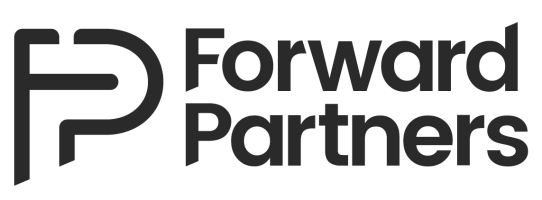
- Idea stage investments – great products in AI, former employee at Mind Candy, BBC
- Founded 2 startups, sold one
- Background working in startups as software developer and then product management before leaving
- Met Nick Brisborn, MP, said to meet for and work for 6 months
- Strategy and multiple companies – said yes to all firms with product people
- Met Nick Brisborn, MP, said to meet for and work for 6 months
- Want synergies in sector expertise – early stage funds can be helped by these people, CEO may be process-based
- Difference between Nick – who has done it extensively and him – learning
- Open hours monthly – spend 15 min to pitch or getting advice – sees certain commonalities / niches
- Ones that seem exciting pop out because they’re different or unique, and they understand that
- Investment themes for what they’ve invested in or problems that you haven’t found
- Brainstorm lots of ideas, talk to people, observe & understand the problem
- Tend to take people who are solo founders that are non-technical – not sure how to build the idea, maybe
- Hard to evaluate or understand who is good – but he’s anti-outsourcing
- If you can, cultivate relationships
- Founders that do well – very good understanding of their uses & seeking the right people
- Ability to inspire, big vision wrapped up – 10x better aim
- New founders come in – can see the problem. Have the investment.
- First month will be to talk to people – speak to 40+ to seek customer segments and market.
- What problems? What solutions do they have? How do they feel? Where do they go?
- Watch people solve the problem themselves, immerse themselves in the problem?
- Ex of Lex – Founder’s Friday legal market – launched w/ forum/landing page
- Tried to match lawyers with the clients. Understood the software he needed to build and the product.
- First month will be to talk to people – speak to 40+ to seek customer segments and market.
- SV Product by Marty Cagan
- Massive interest in health tech – MindSpace, GP fixes, access to data earlier
- Most recent investment: The Gifting Company
- Idea stage investments – great products in AI, former employee at Mind Candy, BBC
- Marc Freedman (@marc_freedman), author of How to Live Forever (Wharton XM)
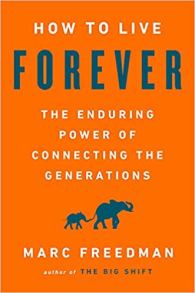
- Discussion of the split generationally in the workplace
- More people living at home longer – even after the crash, still increasing
- People are used to being with others, but sometimes the mentorship game doesn’t work bidirectionally
- Peter Adams (@patchadams), Reporter at Marketing Dive (Wharton XM, Marketing Matters)
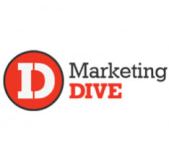
- Target, Amazon, Walmart jumping into content space
- Discussion of Nike and Foot Locker branding – popups that are genuine
- Digital footprint for awareness – Air Jordan with Fortnite
- Did they need revenue split?
- Taco Bell as a leader in the experiential branding space – launching hotel soon
- Had a few popups – “Cantina” in Vegas – wedding venues, renting out restaurants
- Digital footprint for awareness – Air Jordan with Fortnite
- Matthew Bradley (@mattyjam), Investor at Forward Partners (20min VC 097)
- Super-early stage London VC and Betting Big on Consumer Fintech
- Father had done investment banking, so he went there first – ‘legit’ career in 2006
- Structuring a derivative for midmarket pension fund in UK – packed up immediately after
- Did an MBA, few start-ups that failed and invested in others
(1 doing Series B)
- Did an MBA, few start-ups that failed and invested in others
- Finance stuff, investing in small businesses and looked at venture capital – took unpaid internship at Forward and is there now
- Structuring a derivative for midmarket pension fund in UK – packed up immediately after
- Idea stage funding because they have a team of product people, full stack developers, designers, recruiters to give success
- Offering $250k at this stage which is significantly larger than others
- Path Forward as operator framework for proven need for prototype/product for first 100 or 1000 customers
- As an ecommerce fund, can test cheaply/quickly – why they look for the early adopters
- More $ in series A than ever before – round sizes are getting larger, so more startups are staying in seed earlier
- Late vs early, crowdfunding and angel rounds
- Google Ventures took on LostMyName, a portfolio company, and wanted a TransAtlantic investor
- Asking questions to entrepreneurs 3 or 4 times, varies for team – teasing out assumptions and questions
- Go-to market size, 1 year timeline, initial target customer
- He’s a big fan of open-ended questions: Is there anything that he hasn’t asked that he should ask?
- Go-to market size, 1 year timeline, initial target customer
- With new YC’s announced, he says there are a repeat of clones that show up in the UK – not necessarily a bad thing
- Startups have to often think of different problems, say payer difference in healthcare
- Consumer credit bigger in the US than UK, probably
- Accelerator route – gold standard for incubator can almost always been great choice – but launching and consider market
- 50 next unicorns report: overweight in consumer tech and on-demand services and underweight in healthcare
- Believes in consumer financial services and healthcare
- The Master and Margarita as favorite book
- Funding landscape in London: yes, more chickens – more eggs – more $
- Most read blog / newsletter (he said he reads 1.5 – 2 hours a day): Mattermark Daily, Term Sheet, Nick’s (boss), Tunguz, Mahesh
- First round review weekly is a great one for early stage startup
- Thiel as investor – lean methodology being bashed, crowdfunding not necessarily as replacing VC
- LiveBetterWith – aggregator for nonmedical products that help people live with chronic diseases – super early stage
- Jose Benitez Cong, co-founder and CEO of Plause (Wharton XM)
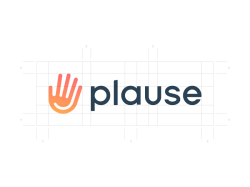
- Growing up both Mexican and Chinese – couldn’t speak English, couldn’t speak Chinese
- Was dropped off as a kid to his grandparents’, who spoke Chinese – school started Monday and he needed to figure out English
- Hustling to do window washing and scaling it while he couldn’t drive (saved money – until he started spending it on girls later)
- Scaling of window washing broke after doing orders and calendars because money wasn’t as easily split for not equal shifts
- Growing up both Mexican and Chinese – couldn’t speak English, couldn’t speak Chinese
- Bill Glaser, Bacon Chips – co-founder of JUST (Wharton XM)
- Bacon chips – PIG OUT brand, all vegetarian
- Formulated by David Anderson, former chef at Beyond Meat
- Mushrooms that are flavored to taste like bacon with a tech patent-pending
- Mushrooms as umami and making sure the consistency worked to be crunchy
- Getting investment capital – some $1.5 million
- Bacon chips – PIG OUT brand, all vegetarian
- Catapult Ventures Darren & Rouz Jazayeri (Wharton XM)
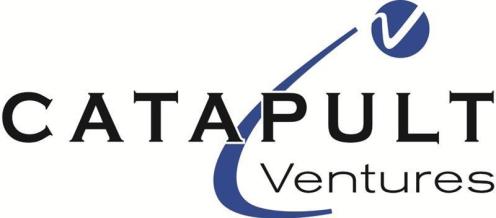
- Technologists, looking for solutions
- How they came to the name
If you found this interesting, share with me and others:
Sharing, Building and Community (Notes from June 24 – 30, 2019) July 16, 2019
Posted by Anthony in Digital, experience, finance, Founders, global, Leadership, medicine, questions, Real estate, social, Strategy, Uncategorized, WomenInWork.Tags: #business, books, community, content, experiences, finance, freedom, Google, humanity, ideas, investing, life, marketing, medicine, Money, questions, reading, social, sports
add a comment
If you hadn’t noticed or read from the start, you should know that I’ve gone in order from the start on the Twenty Minute VC episodes. Many of the conversations are from 2015 and 2016 so they end up as a bit of a history lesson and window into the mindset surrounding capital / founding at that time. Bubble discussions or higher capital raises are comical when we now know what today looks like – higher, still. Although I’d say geographically, expansion has exponentially grown as it’s become easier and more common for firms to seek out what they really believe is an edge for them. Interestingly enough, people also don’t stay where they were, especially over a few years. As I look them up to refresh and review for these posts, it can be very enlightening to see where they are currently – did they start a new project? Open a new fund? Move on to different industry?
David Teten was one of those switchers, as he was with ff V/C at the time, and now over at HOF Capital. Similar role but perhaps more focused on what he’d like to see. Also, many of the firm founders and partners aren’t heralded for having more than a few roles – some probably for different reasons, but I look at that for myself as a way to stay extremely excited about continuing to learn every day, every week. To believe in yourself to be capable of doing great work, helping to create as much value as possible in the most efficient manner, hopefully. Weird that many people receive flack for multiple positions when many of us strive to follow a few particular, but potentially different, things. For this, I admire David in keeping up with his roles, while keeping us all in the loop of his thoughts, generally, as well.
Next, there were two involved in real estate, housing and construction that were pretty much aligned. What do I mean? Both believed the rising housing (and estate, generally) costs have come as construction costs have increased significantly. This is creating unduly pressure, and making it more difficult for projects to get done. Maggie Coleman went through real estate differences for certain types, while John Rahaim of SF mentioned precautions that are being taken for the coastline and bay.
Then, we had Ryan Hoover, who runs ProductHunt, and is one of my favorite follows. He built what he and his friends wanted – a place to share ideas and products to try. And 5 years later, here he is. I won’t spoil some of the nuggets that he shared, including a few of his favorite books and monetizing once he knew it was real. Not to be outdone, a discussion with Phil Southerland covered how he has built a strong community of athletes born or having diabetes. To demonstrate how they can grow, he helped form a team of all diabetics and professionally rides to bring awareness and improve the lives and conversations surrounding them.
There is important work being done by many people, including ourselves. If we can better someone’s life, it’s likely worth doing it if you’re enjoying it. We can help by just being who we are and doing what we would like to do. I’d love to hear some of your ideas or thoughts regarding the people covered in this week’s notes.
- David Teten@dteten, Partner at ff Venture Capital, founder and Chairman of HBS (20min VC 095)

- Alumni Angels of Greater NY, largest angel group in NY
- How to Disrupt the Investing Business
- Grew up in Marin Co, played with computers – consulted and taught Excel as a kid – bah mitzvah on knowledge test
- Fired when he was 16 from financial services company because they figured out password was pw for admin
- In college, worked briefly in strategy consulting before investment banking in tech – business school where he started multiple ventures in Israel and US
- Joined ff VC in 2011 when it was 3 – now 27+ people, as largest headcount seed VC in Canada, Amsterdam, Israel, UK, US
- Company ff should be generalists – broadest possible but don’t invest in life sciences due to no expertise there yet
- Can’t predict in advance, so they want companies that are interesting with high growth potential
- Admires outbound of TA or Summit, but something like SignalFire to look at data for high growth
- Resources to help founders to reduce write-offs (1 in 6 fail for them) which attracts inbound (2000+ a year)
- Filters down to ~12 a year to invest
- Resources to help founders to reduce write-offs (1 in 6 fail for them) which attracts inbound (2000+ a year)
- Google Ventures / SignalFire and others as algorithmic approaches to source – increasing importance but not validated thesis
- Loves their model as efficient – frustrations at other vc’s (80% of time with people / co you can’t invest in – partying and not meeting anyone)
- Nobody at ff has a job as origination, Angelist as disrupting the generalist VCs (those that don’t have added value)
- Top 3 Important Ways to Support Companies: capital raising, finance acceleration team – CFO acting, recruiting
- How to determine value add as entrepreneur
- Reference check
- Do the math on portfolio: for ff, 60 portfolio co’s (active in 2/3), 24+ ee’s
- How many people in the team? How many portfolio co’s? How many checks?
- Use that to determine person-hours you can expect
- What sort of technology platform to support the company?
- How many people in the team? How many portfolio co’s? How many checks?
- A16z as huge operational side – finance, marketing, etc…
- Short list for companies doing this – very capital intensive
- Believes that there will be some shrinkage in the model in a downturn if it’s not fully thought out
- Very illiquid asset class (mentioning to LPs) – 12 different academic studies for 18-54% median returns
- 10+ years for cash returns, lot of institutions aren’t okay with that time range
- David Swenson (head of Yale endowment) has argued long-lasting liquidity premium for illiquid asset classes
- Even the most liquid asset classes aren’t liquid when you want them to be (2008, for instance)
- Indiegogo as seed – crowdfunding space, competitors aren’t invested in – watch Angelist very closely, though
- Services from Angelist as they look around at different parts of deal flow
- Encourages member space to get involved in angel investing for next generation of companies – exposure to ecosystem
- Promote economic growth
- Research study: Disrupt investing – security, for instance
- Secure (ID verification), Distill Networks (blocks bots), IONIQ (from Atl, secure cloud usage)
- New processes and make them efficient: Addapar (Excel/PDF), Earnest Research (nontrad datasets eg: cc info, email receipt mining)
- VC usage of social media: much more aggressive, judicious but no breakfast tweeting – sell
- Edward Tufte – Yale prof, must read
- PandoDaily as top blog – not afraid to make enemies, discuss what they do
- SkyCatch as most recent – drone tech, set of tools for collecting data via drones – construction use case (Kamatsu client)
- Monitor exact status of project, imperative they know where everything is
- Maggie Coleman, MD and Head of Intl Capital at JLL RE (Wharton XM)
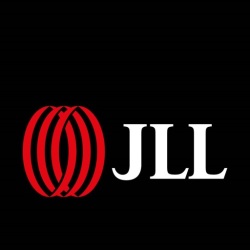
- Looking at different real estate measures – single family homes, for instance
- Do different assets in real estate require a different measure to draw attention from foreign investors?
- Didn’t seem so – would depend on where the capital was coming from (their own environmental basis)
- Construction costs as outpacing many other costs – affecting many markets
- John Rahaim, Director at SF Planning Dept (Wharton XM)
- Having to adjust for the changing seaboard – will regulatory measures be taken?
- No mechanical or living people in commercial buildings on the first floor, for instance
- Says there are already precautions being taken on the bay – 5-8 feet, for instance
- Construction costing so much already that it’s been very difficult to get building done post-land acquisition
- Estimates of $600-800k for this due to inflationary and costs passed from the building companies
- Said he had some 36? Projects that are being held up
- Having to adjust for the changing seaboard – will regulatory measures be taken?
- Ryan Hoover (@rrhoover), Founder @ ProductHunt (20min VC FF026)
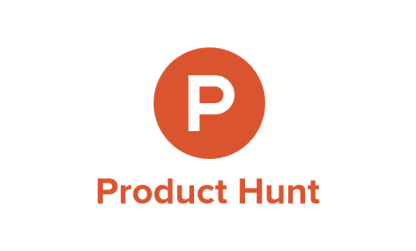
- Best community builder, Twitter engagement, winner of TC Best New Startup of 2014
- Just wanted to build a consumer-focused thing to discuss with his friends about app ideas or companies
- Put it on Quibb and Twitter – manual things initially, set up an email subscription, personal email connecting with people
- Keep building communities otherwise it peters out
- First iteration was RoR built over 5 day Thanksgiving holiday – core is the same, people using and community growth
- Having people tell them and comment on ideas (used it as their new home page)
- How to plan to go from early adopters to mass market?
- Eager enough to participate, engage and not necessarily representative of the common users
- Categorizing Podcasts and putting them on the home page – barrier before, now based on episodes
- This Week in Startups, Startup Show (by Gimlet founders), Jake Gyllenhaal ep of Mystery Show (Gimlet media) – is he 6′ tall?
- Worked on Hooked with Nir Eyal, using some in ProductHunt
- Email digest is the trigger – action is to open / click on something to find inspiration or interesting
- Built email variability – some consistency, surface different titles and content
- Follow collection, clicking follow, reward is updates on the collections – permission for emailing to reinforce and come back
- Email digest is the trigger – action is to open / click on something to find inspiration or interesting
- Ryan’s favorite collections: featured ones, Russ has game collections (browser ones), Julie created bakednight
- Betaworks kept popping up on their engagement charts – Twitter very active, products (Without, where would he be?)
- Always tagging the authors and being genuine, personable, funny or light-hearted
- Monetizing PH – at its core, download/use/purchase products with the right intent
- Over time, will explore more of this
- Fundraising: first time for Ryan, different as a side project and growing
- Quibb as newsfeed other than Twitter and also Crunchies where they announced Shipt but said “Actually, it’s PH”
- Sunrise as calendar app, Pomodoro – no longer. Favorite book: Art of Game Design by Arty Shell
- User psychology and game mechanics, how it applies to tech products as well. Game design not always thought about.
- Brian Solis (@briansolis), author of Lifescale (Wharton XM)

- Survey on how social media has changed / warped views for girls
- Hadn’t fully released yet
- Phil Southerland (@philsoutherland), CEO of Team Novo Nordisk (Wharton XM)
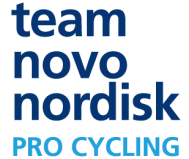
- Living with T1 diabetes and bringing awareness
- T1 and T2 can be helped, dealt with and he’s trying that
- Cycling team focused on it
- Full team is athletes with diabetes
- triathletes, runners and cyclists
- Full team is athletes with diabetes
If you found this interesting, share with me and others:
Different Ways to Create (Notes from June 10 – June 16, 2019) July 3, 2019
Posted by Anthony in Digital, experience, finance, Founders, global, Hiring, Leadership, NFL, questions, social, Strategy, training, Uncategorized, WomenInWork.Tags: #business, community, content, experiences, finance, freedom, human, humanity, ideas, investing, life, marketing, Money, NFL, questions, reading, research, shopping, social, sports, Strategy, Time, training
add a comment
3 fantastic sounding women to start. One in VC and finance, discussing the difference between NYC and SF for her. The second compared in-house marketing strategy and outside influence. What’s that look like? How much control is there? Last, but certainly not least, was an author who discusses something that I’ve seen with family and my sister – the challenge of raising a child while balancing some semblance of normalcy in work. What’s expected from yourself? What should be reasonably expected from work? What’s a balance?
Those women: Erin Glenn, Julie Scelzo and Lauren Smith Brody.
A few sportsmen discussed data and capital. Sixers Innovation Lab and former exec for And1 mentioned how they think about growth in Philadelphia and the brand, who can they support in the community that can also help with the team. John Urschel, former Baltimore Raven, is a published mathematician now who discussed the influx of data collection and analysis among all sports and teams. What they can do makes a great athlete experience, fan experience and overall performance improves.
A plethora of rising stars followed, from Kanyi of Collaborative Fund to Sofia Colucci of Coors and the co-founders for SHINE text. Hope you enjoy my notes and you check out the podcast episodes!
- Erin Glenn (@leeeringlenn), CEO of Quire (20min VC FF025)

- Entrepreneur as kid – day business for summer camps, then management consulting, IB and took a company public (econ consulting firm)
- Got bug to start own thing in 2010 – joined KIXEYE in SF for 4 years, video game company
- Wanted to go to NYC (as kid in OK) – went to meet w Betaworks, fell in love with Quire
- Mutual conv to join Quire – loved it – equity crowdfund co
- Venture-back co’s enabling portion to raise for community & mission
- Min. investment is $2500 – supporting larger investments as well, up to $250k
- Likelihood for investors to get taken advantage of – Title III discussion (investors with <$100k income/net worth can invest up to $2k or 5% of income)
- Mattermark study on investor bases that exist and why people do invest
- Investor and diversity – minority, gender, big differences in those that follow Mattermark or others
- Crowd won’t provide scaling / grow money (the $50mil+ rounds), but community can help participation at a lower level
- Motivation to invest, other than financial incentive – supporting company’s mission + founders, spurring economic growth + innovation
- Real commitment to realize dreams, grow economy
- Benefits with crowd investing for company – moral and psychological
- Supporters of the company can invest, which is reinforcing for doing it – customers that are owners of the business spend more, loyal, etc
- SF vs NY startup ecosystems and CEO role
- Had joined Quire with 2 suitcases, dog and air mattress after 2 days there
- CEO role – really fun and exhilarating with challenges daily, gained confidence at eliciting feedback from ideas
- Coming up with better solutions and getting them to help because we don’t have all answers
- Intensity and vibrancy, competitive spirit in NY even though it’s smaller-feeling
- Want to take on SV and not give up the competitiveness
- More female founders in NY – fashion, finance, media in senior executives trying new things
- Favorite book: Magic Mountain ahead of WWII in Europe, Switzerland
- Favorite blog: Fred Wilson’s and Tim Cook as favorite innovator
- Gimlet Media (first investment), Kano, Duel as others
- Julie Scelzo, executive creative director at McGarryBowen (Wharton XM)
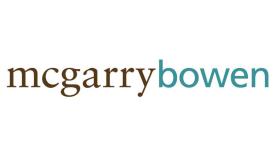
- Talking about marketing difference between in house and outside
- Going from Creative MD for Pandora to take on MGB AMEX
- Moving from agency to internal at Facebook – not even a salary bump, but just felt right
- Worked helping clients was rewarding but she missed creating
- Talking about marketing difference between in house and outside
- Lauren Smith Brody, author of The Fifth Trimester (Wharton XM)
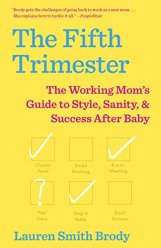
- Discussion of parental leave in the workplace – if uneven with your partner, mixing it up or staggering
- First 6 months as crucial for development – how to best alleviate this
- Every person is different and has different attitudes
- Nobody can generally be told how something may feel for them
- Having the partner available in the first 6-9 months provides evidence that they’re capable, and can understand some of processes
- First day of work being scary – moreso as a parent – train whole life to be in workplace
- Can be comforting back at work, not so much for first days as a parent
- Dilip Goswami, Molekule Air Filters (Wharton XM)
- Being his father’s son, a typical engineer
- Developing and deciding what part of product to have in house vs outside
- Hybrid model
- Having customer support and knowing it worked – shipping and using that as validation
- Seth Berger, founder and CEO of And1, Sixers Innovation Lab (Wharton XM)

- Discussing how coaching basketball to young adults was so helpful
- Marrying And1 with his passion for basketball and teaching and being around it
- Sixers Innovation Lab – knew Josh from the 90s working on a failed internet co originally
- Helping with capital up to $1mn and seeing 10x returns so far
- John Urschel (@johnCurschel), Former lineman with Ravens, MIT mathematician (Wharton XM)
- Talking about the lifelong balance of math / football from his memoir
- Thinking about where analytics may be super exciting in sports – real-time strategy if they’re allowed the computers / data on-field/court
- Tracking data is so strong, it’d be interesting to see what coaches may do to get there
- Nathan Furr, Curtis Lefrandt, Innovation Capital author (Wharton XM)
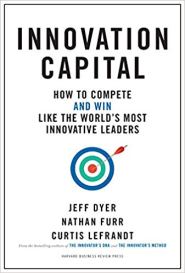
- Author discussing how innovation costs resources
- Talking with Marc Benioff and others for the most innovative leaders
- Sofia Colucci, VP Innovation of Miller Coors (Measured Thoughts, Wharton)
- Introducing a new brand, Cape Line, into the world
- Usually a 1.5 – 2 year process for a corp this size
- Cut it down and released in 2019, dropped the other project (Project Sprint)
- Had already done market research, wanted a more healthy, alternative to beer for women – cocktails in a can
- Packaging and what that would look like after tasting
- Introducing a new brand, Cape Line, into the world
- Jennifer Pryce (@jennpryce), President CEO of Calvert Impact Capital (Wharton XM)
- Impact capital and how they grade different companies on the degrees for investment
- Infrastructure, seeing them surpass $1bn
- Marah Lidey (@marahml), Naomi Hirabayashi, co-founders of SHINE app (Wharton XM)

- SHINE as a wellness app for meditation
- Gaining ground with their superusers – seeking feedback
- Self-care platform, weren’t sure how they attracted so many men – but it’s definitely catered to their experiecne
- Reached out to one of the first superusers that was male to get his input and to have influencers help
- Reached out to one of the first superusers that was male to get his input and to have influencers help
- Product-market fit and development was always based on how they wanted the app to be- what they were searching for
- SHINE as a wellness app for meditation
- Kanyi Maqubela (@km), Partner @ Collaborative Fund (20min VC 094)
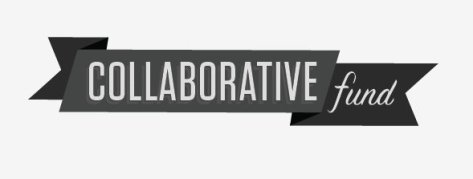
- From South Africa originally, investments into CodeAcademy, Reddit, AngelList, AltSchool, TaskRabbit
- Founding employee of Doostang, attended Stanford Uni & worked on Obama campaign in 2008, as well
- Dropped out of Stanford, compelled by interest to see other part of world – did a startup, $20mil of VC funding for a couple startups
- Being young, decision to leave was easy but once he’d left, it was tough
- Making friendships and lasting connections easily in college – some communities outside, in pro world, was rough
- Met his partner, Craig, while finishing school and doing work in design – convinced him to help him with CF
- Dropped out of Stanford, compelled by interest to see other part of world – did a startup, $20mil of VC funding for a couple startups
- Investors are those that believe in collaborative economy – nodes, peer-to-peer and nodes for networking
- Every consumer/employee/companies have obligation to align interests and value sets
- Looking at companies to focus on impact and values – aspirational culture as outcome of collaboration
- For the fund – stage specialization or theme?
- Theme may be time-efficient-oriented. Reminder that many of most successful people have skipped on massive wins multiple times over.
- Altman mentioned about having a point of view and heuristic to drive decisions (whether it’s stage or theme)
- Theme may be time-efficient-oriented. Reminder that many of most successful people have skipped on massive wins multiple times over.
- Being a partner at 30 – GPs with skin in the game
- As young, have to have been very successful early or came from money to get into the fund
- Needs to prove himself but as younger, may have been very risk adverse in the sense he wasn’t free-swinging
- Facebook went public 7 years (quick for industry, but not necessarily quick for a fund) – feedback loop timeframes
- Million ways to market as investor, drive value as portfolio, data, theme or stage specific
- Blog as high leverage marketing for himself, writing is how he clarifies his ideas to himself and the public
- Limits and is very prescriptive for the networking aspect of VC, conferences – wife in medical school so when she’s free, he makes himself free
- Accelerator / demo days as good for investing – he likes being first institutional round, but thinks demo day to discover is not their best way
- Sometimes the due diligence for demo days of seeing what’s out there
- He uses them to talk to other VCs, see source and deal flow – coopetition – high leverage, high marketing channel
- His best way in is likely the portfolio companies under them – he looks for connections for new places and vouch for them
- Naming Fidelity markdown of a bunch of companies – saying that private companies are being treated like they’re public companies
- Realtime prospects that are valued – can go up or down, financing or not
- Private crowdfunding to create liquidity, getting to cash flows and thinking about dividends, debt, crowdfunding – IPO bar is so painful
- Fav book: Brothers Karamazov – Dostoevsky as “fiction bible”
- Union Square Ventures as the one he looks up to – Benchmark, also (Read ebooks)
- Concept of Founder-friendly – agency from founders holding them responsible, but becomes messy / complicated
- Most recent investment at that time: CircleUp was series C, crowdfunding platform for CPG – other forms of financing for orgs will be transformed
If you found this interesting, share with me and others:
Innovative Investing (Notes from June 3 – June 9, 2019) June 25, 2019
Posted by Anthony in Automation, cannabis, Digital, education, experience, finance, Founders, global, Leadership, medicine, NFL, questions, social, Strategy, training, Uncategorized, WomenInWork.Tags: #business, Analysis, baseball, books, cannabis, Change, community, content, education, experiences, finance, human, humanity, ideas, investing, life, marketing, medicine, Money, NFL, questions, reading, research, shopping, social, sports, Start-up, Strategy, Time, training, video
add a comment
The primary theme of the week seemed to be how data can get pooled together to determine a signal and how to learn to seek the best way we, as individuals or teams, can discern valuable content to motivate actions on that information. Data is plenty – it’s a matter of gathering, curation, analysis and testing before putting it into action. This is done by any number and types of companies nowadays – this is a source of advantage seeking that forward-thinking ones make, in my opinion.
Since my notes were more detailed, I’ll try to keep this brief. The wonder people below hailed from banks (First Republic Bank), funds like Emerson Collective and Womens VCFund, marketing company like BEN or LikeFolio and then David Epstein’s Range, Sinead O’Sullivan’s work on space or the data Rohan Kumar collects with Azure Data.
Create a hypothesis. Test the hypothesis. Put into action, or iterate. Rinse, repeat. Good luck!
- Samir Kaji, (@samirkaji) MD @ First Republic Bank (20min VC 093)

- Leading private bank and wealth management, before at SVB
- 1999 – “anyone with a pulse could get a job” but he was working selling vacuum cleaners at dept store
- Was told by family to get a real job – applied to first business SVB, got resume in and interview immediately before starting
- First couple years were tough – learned a lot, but was 2004 until companies had scaled and were getting bigger
- First 10 years were tech companies, series A and B and venture debt – post 2009 Lehman / Bear, went to venture group at SVB for 4 years
- Made the move with a few others from SVB to First Republic, now leading team in micro-VC and early-stage tech co’s
- Says the micro-VC is more entrepreneurial & collegial compared to extended stage VC’s
- First fund is that you can get traction for a second or third one, fees as pressure – most likely why many people come from some wealth
- Writing large checks as GP, as well
- 2-2.5% management fees initially vs 1 / 25 or 1/30 model
- 1999 – 2002 distribution was 0.9x and you’d get 10x return (whoops) – very difficult for funds to get 2-3x for LPs
- First fund is that you can get traction for a second or third one, fees as pressure – most likely why many people come from some wealth
- Barriers to entry much smaller for $20-25million as compared to $500mln – institutional, etc — he can go to family friends and high net worth
- Seed over next 5 years: contraction in space (wrong), but said there isn’t enough returns for funds to max it
- 1100 in the 2000 year and burst
- Continued prominence of Angelist platforms, maybe an integral part of the ecosystem
- Starting to see use of data (Mattermark, CBInsights, SignalFire) to more efficiently identify and action at this level
- Favorite book is Phil Jackson’s – behavioral psychology, Give and Take is another one
- Really respects the pioneers of the industry and first-time fund-raisers
- Mike Maples, Michael Deering, Steve Anderson, Jeff Clavier when it wasn’t a thought
- Habit – reading book or blog post for 20min in the morning before email
- Disconnect from audio / video devices and reflect for an hour
- 2 hours a day for family/friends and disconnecting, as well
- Thomas Redpoint, Mark Suster, Brad Feld, Strictly VC, Ezra at Chicago Ventures
- Knows awesome fundraisers but terrible at returning capital – didn’t mention any
- Collectively Driving Change, Laurene Powell Jobs and Ben Horowitz (a16z 5/27/2019)

- LPJ – founder, president of Emerson Collective
- Grew up in NJ – father passed away in a plane accident when she was 3 – 3 children.
- Mom remarried so there were 6 of them. Wooded area of NJ.
- Core values and dedication to education to get out of the area.
- She went to Upenn – first student from her high school that went to Ivy League – ~20% went on to more schools
- Addressing East Palo Alto school as a volunteer to help – 1st talk, 0 had taken SATs
- What happens when you’re first to graduate high school? What’s it mean to the information from family?
- What happens to be first to want to go to college, thrive&complete it?
- To have the aspiration, can be a leader in the family – translator, get sucked into all problems
- Started with 25 freshmen – would have to come with friends for responsibility mechanisms – for College Track
- 3000 high school students, 1000 college, 550 grads
- Collective of leaders, innovators – education inequities, access and need for enhanced/robust curriculum
- 10 year time horizons – getting them together is scheduled with Monday all-staff meetings (3×3 matrix of videos)
- 5 cities, sometimes philanthropic speakers or reports
- Discussion of reading as you fall behind through third grade before switching to reading to learn – already behind
- XQ as SuperSchool dream – 17 of 19 will open in August
- Caring about impact and solving problems, not wealth increasing – wants access to policy or money and not taxes
- Judged Giving Pledge for not wanting to be more philanthropic
- Environmental, edtech portfolio, cancer / oncology investments, immigration incubator, new thinking to old problems
- How do you know when you’re succeeding? Collecting data on everything they do.
- Example: XQ – schools and districts, state of RI as switching to statewide competition
- Chicago has good data for fatal/nonfatal deaths (I disagree)
- Imperiled or important institutions like journalism and media need to be sustained, how many join?
- Concentrating and following where IQ is migrating (hahaha – what a joke)
- Data Infrastructure in the Cloud, Rohan Kumar at BUILD conference (Data Skeptic, 5/18/19)

- Corp VP of Eng of Azure Data Team at Microsoft – SQL and data services, open source, analytics, etc
- Trends in data engineering in the cloud, serverless and hyperscale
- ML and AI and enabling applications – shifting to edge vs cloud – analysts predict 70% will be on edge devices
- Solutions and private edges – training in the cloud and deploy them on the edge applications
- Data platform needs to be the right foundation
- Highlight for him from conference: work they’ve done on relational databases in the cloud – as volumes grow, scalability challenges
- Hyperscale for Azure and PostgreSQL, as well as MS SQL soon enough – system scales with needs (they’ve tested <= 100TB)
- Acquired Citus Data, support scaling out the compute layer – strong team, great product, matches in Azure and open-source
- Releasing serverless option for Azure database – costs designed to stay low and optimized
- Analytics side: customers wanted to do real-time operational analytics – didn’t want to move them outside of their core product
- How is data distributed and having compute be co-located with the data to gain Spark efficiency being nearest to node
- Support Jupyter notebooks across all APIs to modernize to do more predictive analytics
- Attempting to build out pipelines requires too much scripts, instead have Data Flows in Azure Data Factory – no-code and UI
- Wrangling data visually and seeing if something can be recognized or learned to repeat across other columns/tables
- Latency won’t be ideal if compute nodes occur nonlocal to the data changes – can’t do 50,000 nodes all at once
- Excited for the future: Horizon 1 (next 8-12 months), Horizon 2 (~3 years), Horizon 3 (moonshots)
- H2: Hardware trends, what do customers want? Pushing boundaries of AI and ML, healthcare, gaming, financial services, retail
- Wide or Deep? David Epstein, author of Range (Invest like the Best, 5/28/19, ep. 133)
- First book’s research lead him to get into specialization and finding kernel for next
- Some countries: turning around national sports teams – why don’t we try other sports? Contrary to 10,000 hour rule.
- SSAC – debating Gladwell – athletes have a sampling period instead of first gene – delay specialization
- Used Tiger vs Roger – Roger had tried a ton of sports vs Tiger who was born and was playing golf
- He was not good at predicting what people/public would attach themselves on to – 10,000 hour rule – race/gender as most talked (but weren’t)
- 10,000 hour rule were based on 30 violinists in world famous music academy (restriction of range)
- Height in American population vs points scored in NBA (positive correlation) but if you restrict height to NBA players, negative
- Finnish cross country skier who has genetic mutation similar to Lance’s boosted
- Sensitivity to pain and modification to your environment – also sudden cardiac arrest in athletes (what pushed his interests)
- Book as opposition to Outliers and Talent Code – interpreted a lack of evidence as evidence of absence (genetics matter)
- First year he read 10 journal articles a day and not writing – they were making conclusions they could not make based on their data
- Differential responses to training – best talent were missed because we don’t know about training responses
- Collection and exploration phase – competitive advantage for expansive search function to connect sources or topics
- Has a statistician on retainer, essentially, to check models or surveys
- Wanted to know what he was missing – “how come I broke the 800m women’s world record after 2 years of practice? – genetic difference”
- Racing whippets – 40% had a genetic defect that gave them more muscle and oxygen
- All of sports as a limited analogy (problem after Sports Gene; now, more tempered)
- Robin Hogarth addressed “When do people get better with experience?” Don’t know rules, can try to deduce them but can’t know for sure.
- Kind learning environment: feedback immediate, steps clear, information, goal ahead
- Wicked learning environment: can’t see all information, don’t wait for others, feedback delayed/inaccurate
- Study at Air Force on “Impact of Teacher Quality on Cadets”
- Have to take 3 maths – calc I, II, III (20 kids randomized) – professors best at causing kids to do well (overperforming) systematically undermined their performance thereafter
- 6th in performance and 7th in student evaluations was dead last in deep learning
- Narrow curricula were better at the test that they had at the end would be negatively correlated with going forward in performance
- Teachers that ignored what was on the test taught a broader curriculum (making connections vs procedures)
- Have to take 3 maths – calc I, II, III (20 kids randomized) – professors best at causing kids to do well (overperforming) systematically undermined their performance thereafter
- Learning hacks: Testing (wonderful – primed to test ahead of learning), Spacing (deliberate not-practicing, Spanish ex spread 4 hour twice, 8 hours), Mixed practice
- Ease is bad – known time horizon for when you have forgotten again – interleaving and spacing mixed
- Passion vs Grit (“Trouble with Too Much Grit” – Angela Duckworth’s research)
- Duckworth did a study at West Point for East Barracks cadets – candidates score (test + leadership + athletic) was not good prediction of doing this (overall it was good)
- Grit was a better predictor for making it through East Barracks – she questioned whether it had an independent aspect
- Variance for grit was probably 1-6%, especially after “flattening” groups – looking at people that had a narrowly defined goal for short periods (cadets or spellers)
- Cadets were scoring lower on grit at late 20s vs earlier – tried some things, learned others about what they want – grit is poorly constructed
- Look holistically – if, then signatures (giant rave – introvert, small team – extroverts) right fit looks like grit – developmental trajectory as explosion matching spot
- Duckworth did a study at West Point for East Barracks cadets – candidates score (test + leadership + athletic) was not good prediction of doing this (overall it was good)
- Choosing a match for a future them who they don’t know in a world they can’t comprehend – people that find good fits (in practice, not theory)
- Paul Graham’s “Commencement Speech” that he wrote “Most will tell you to predict what you want in 20 years and march toward it.” (premature optimization)
- Everything you know is constrained by our previous experiences – limited as a teenager – just expanding and learning as you go forward
- Paul Graham’s “Commencement Speech” that he wrote “Most will tell you to predict what you want in 20 years and march toward it.” (premature optimization)
- Gameboy example – with so much specialized information that can be disseminated easier – can take from all types of domains and recombine them
- System of parallel trenches – can be broader much easier now – hired people for Japanese and German translations
- Japanese man profiled in his book – technology was changing faster than sun melts ice – didn’t get Tokyo interviews
- When he got to Kyoto company making playing cards, he was a tinkerer who was maintaining machines – started to mess with them (arms)
- Turned them into a toy, and it was Nintendo – cartoon-branded noodles (failed), and had toy development
- Lateral thinking with withered technology – stuff that’s cheap, easily available – takes into other areas
- Remote control, more features – wanted to democratize this and strips it down – LeftyRX only left-turns
- Lateral thinking with withered technology – stuff that’s cheap, easily available – takes into other areas
- Sees calculator from Sharp and Casio and thinks he can do a screen and handheld game – small games
- Had issues with Newton’s rings so he found other small tech (credit cards embossed) to fix small pieces
- What it lacked in color, graphics and durability (could dry it out, batteries would be fine, split it up, “app” developers because it was super easy to understand)
- In areas that next steps were clear, specialists were much better – less clear, generalists were more impactful – depends on the specificity of the problem
- 3M had a lot of areas for this, “Periodic Table of Technology” – post-it note came from reusable adhesive that had no use for
- Only Chinese national woman to win Nobel – “Three No’s” (No post-grad, foreign research, membership in academy)
- Interest in science, history – Chinese medicine for treatments of malaria – world’s most effective treatment from ancient text
- First book’s research lead him to get into specialization and finding kernel for next
- Greg Isaacs, BEN (Branded Entertainment Network) (Wharton XM, Marketing)

- Discussion of getting data from Netflix / Amazon / Hulu / tv to better match brands and advertising
- Dirty data via a wharton grad who set up a survey style
- Cohorts and demographics, along with psychographics
- Dirty data via a wharton grad who set up a survey style
- After getting data, attempting to approach Youtubers / social media influencers, tv spots and channels or shows to get their brands in front of the right people
- More pointed, depending on what interests are for their cohorts
- Creative storytelling as the change of cultural mind shift has increased
- Discussion of getting data from Netflix / Amazon / Hulu / tv to better match brands and advertising
- Understanding the Space Economy, Sinead O’Sullivan (@sineados1), entrepreneur fellow at HBS (HBR IdeaCast #684, 5/28/19)
- Facebook, Amazon (3000), SpaceX (12,000) and other funding like Blue Origin / SpaceX / asteroid mining or travel
- Global space economy as $1tn by 20 years – currently $325bn so it would need to 3x
- Breaking apart space resources and otherwise – earth-focused (delivering or existing in space that helps earth)
- Exploration or creating interplanetary existence
- Breaking apart space resources and otherwise – earth-focused (delivering or existing in space that helps earth)
- Running out of space in space for satellites – comparing to airplane docking / loading
- $2500 per kg now to launch, used to be $50k / kg
- Reliance had been on unilateral agreement for space policy – one tech startup launched a satellite that didn’t have permission (but no fall-out)
- Food / grocery stores, wifi, phone, insurance pricing due to satellite data – reliance on services are increasing as the market increases
- Thinks that we’re close to seeing the cheapest cost of launching – cites SpaceX, but won’t allow everyone to participate
- Ultrahigh accuracy will require higher powered satellites – GPS, nonmilitary grade is ~0.5 m – thinks it will prevent autonomous vehicles solution
- Ton of money going into asteroid mining but thinks it’s better for testing missions to Mars and figuring out the problems for future
- Looking at Uber at start and say “people won’t get into a stranger’s car” or other cases as how we see the future – going to Mars, etc
- Earth-focused space technology – 100+ launched satellite start-ups, micronano satellites, relay companies, downstream analytics
- More touchpoints for everything in this manner
- SpaceX will increase public and government intervention and within 50 years, maybe see a human launched there
- Investing w Twitter Sentiment, Andy Swan (@andyswan), LikeFolio (Standard Deviations, 4/25/19)

- 1700+ tweets examined per minute in LikeFolio – discovering consumer behavior shifts before news
- Direct partnership with Twitter to create massive database and how they’re talked about to look for mentions
- Purchase intent, sentiment mentions – trends across product categories or brands
- Example – Delta (as host is a loyalist) – making adjustments
- Expectations are the relative part – comparison to the baselines (metrics compared to itself as baseline)
- Put out a comprehensive report on Apple day after keynote event – September 14, 2018
- Consumers were unimpressed with iPhone lineup – more price sensitive than maybe they’d considered
- Apple Watch was the silver lining – stock / sales may struggle over 3-9 months (upgrade cycles)
- WTW version of keynotes – NYE resolutions – subscribing early to drive revenues the rest of the way
- Purchasing mentions were only up 30-40% compared to 5 or 7x weekly mentions (big difference)
- Shelf-life and how to consider the sentiment data – lead time may be binary corp event (same store sales or year)
- Couple months with Apple, for instance, but with Crocs – resurgence that persisted to current time
- Set up keyword structure and brand database – “I’m eating an apple” as opposed to an Apple mention – human eyes to ‘label’
- “Closed my 3 rings” – apple watch but sarcasm / spam that wasn’t caught (estimates at 2-3% of data)
- If spam / sarcasm are consistent portions of the data, doesn’t really have an effect
- Twitter Mood Predicts Stock Market – Bollen, Mao, Zeng (88% and 5-6% predictions) – fund closed up shortly
- Advantage being better than analysts or pricing and codifying sentiment behavior compared to past quarters, data
- Some consumer trends analyzed as true tipping point or actual movements
- Public prediction before productizing their modeling – made 40 and were 38-2 (confidence as highest)
- Investing as very specific, concentrated and holding ammo compared to trading with option spreads and has risk profile built
- https://arxiv.org/pdf/1010.3003.pdf
- Diversification as 20-25 stocks, doing it over time and with conviction can be done
- Starting in Louisville for his fintech company, host in Alabama, for instance
- Talent can be more difficult to seek out but the world is globally flattening via the internet
- 70% lower overhead cost than being in SF, for instance – developers would anyhow be in Slack channels / not a big deal
- Reduction in cost maintains greater control of company since they don’t have to take reduction of equity to gather more
- Network effects don’t matter if you don’t have a great product or product-market-fit
- Free association game
- grapenuts: best cereal (Co’s been around for 100+ years, branding and $ spent and they can’t figure it out)
- Fintech Future: individualization and customization
- Victory: most important thing in life, achieved what you set out to do – setting goals and achieving these
- Bourbon: pappie von winkle – collecting for dust on shelf 10 years ago and now going for $3000
- 1700+ tweets examined per minute in LikeFolio – discovering consumer behavior shifts before news
- Jonathan Abrams, co-founder Nuzzel news (Launch Pad)

- Landing hedgehog as the mascot – animal as cute, 99designs and surveying 50 friends – 25 men/women
- Discussing how VC’s don’t have great advice, especially when general – too hard to be an expert in such a wide range
- Finds it easier to be very context-driven and providing solutions or action-oriented questions to founders
- Investing now easier with YC and Angelist, etc…
- Timing and other mistakes he made – out of control, losing equity part early (but depends on where you are / what you need)
- Etan Green, professor at Wharton (Wharton Moneyball)
- Discussion on paper of how sharp money comes in at horse racing tracks
- Difference between sites – fairground action compared to tracks, and specific to region (New Orleans, Minnesota, for instance)
- Big sharp money comes in very late, pushing the underdog prices to higher values
- More expensive to bet while at the track than the APIs enabling higher volume bets
- Books at the track are incentivized to bring in as much $ as possible, so $0.20 on $1 vs $0.15 rebate on $0.20 for volume
- Value and differences in how people will bet
- Discussion on paper of how sharp money comes in at horse racing tracks
- Edith Dorsen, Women’s VCFund founder, MD (Wharton XM)

- Talking about their focus on first fund, approach
- Opportunity for finding diverse founders, 25% of their fund had a woman founder
- Starting a second fund
- Had consumer tech, enterprise and not so much b2b, but trying to increase
- Hard to say or give advice if one of their partners don’t have expertise in the domain
- Sophie Lanfear, Silverback Films producer on Netflix “Our Planet” (Wharton XM)
- Species that are dying, going extinct
- What we can do about it
- Aliza Sherman, Ellementa co-founder, CEO (Wharton XM)

- Discussion of client talks when she made them aware of her cannabis endeavors
- How friendly the community is
- Then knocked the idea that ~30% was female to start before diving off a cliff
- CBD to mask opioids – does it really do anything from a pain/treatment perspective, though?
- Anti-chemo because of CBD – really?
- Sounded too rehearsed – made it sound fake, not genuine
- Passion/motivation/mission and kept repeating as the best advice she could give – painful
If you found this interesting, share with me and others:
Matching Environment to People (Notes from May 27 – June 2, 2019) June 20, 2019
Posted by Anthony in Automation, Blockchain, Digital, experience, finance, Founders, global, Hiring, Leadership, questions, social, Strategy, Uncategorized, WomenInWork.Tags: #business, books, community, content, education, experiences, finance, freedom, Google, human, humanity, ideas, investing, life, marketing, Money, questions, reading, research, social, Strategy, Time, training, video
add a comment
In this particularly busy week, I found the theme of the week to be particularly amusing, but coincidentally or not, the dominoes fell that way. Normally, a theme arises like that because everyone is in finance or the same segment or conference is aligning. I just happened to catch a week where the insight that I drew from each person reflected similarly.
Meredith Golden, a dating consultant of sorts, discussed how she assesses all levels of dating profiles for her clients. She goes through a process that she’s dialed in to obtain her optimum level of clients as well as the right approaches to proceed. Asking herself what she wanted was key in determining how she’s grown her business, especially as an entrepreneur and CEO.
Chief Instigator Matt Charney. Now that’s a fun title. And I won’t ruin it. He goes through his past with Disney and Warner Bros and why/how he moved into the HR tech doing marketing – what he saw and how it’s different now. Fascinating and fun segment.
Part of the fun of being an entrepreneur is deciding who you want to do business with. But when it’s difficult, especially at the start, you’re most excited to get ANYONE to work with (unless you luck into that massive customer to start – rare rare rare). This is Kyle Jones of iCRYO found out. Then he gained traction, quickly, and realized he needed to be a bit more diligent in who he wanted to work with – what was ideal for the business, as well as the brand moving forward.
David Epstein likes throwing wrenches, I imagine. He authored the book Range, testing the generalist vs specialist question. As a generalist masquerading currently as a specialist, I appreciated what he was talking about the strength of generalists. But I do understand the place that specialists have in our society, especially deep tech, research and other exceptional areas.
Deb DeHaas grew up under the tutelage of her mother who fought the idea of being an accountant growing up to learn and adapt to the idea of being told what she could/couldn’t do wasn’t ACTUALLY an assessment of her ability to do those things. Such a simple, fascinating concept. She could totally be an accountant, engineer, as she pleased. Took a lot of perseverance but she had a manager at Andersen (before folding) who was a woman and told her to always chase what she wanted – now she’s leading the Inclusion and Diversity team with Deloitte’s Corp Governance Arm. Quite the story of growing up and what she learned.
Not to be outdone, Kim Wilford, who acted as General Counsel for GoFundMe, discussed how she came into her role in charge of the nonprofit arm, and what they’ve done in growing the company and its donations. How to connect marketing, wearing multiple hats and helping people help others. Inspirational while metric-driven, not just dream-built.
I hope you enjoy the notes – a few I didn’t write extra here but had fascinating insights into Happiness Hacking, investing in founders and how they grew companies such as Vroom and GoodEggs. Let me know what you think!
- Meredith Golden (@mergoldenSMS), CEO of Spoon Meets Spoon (Wharton XM)

- Talking about having 6-7 clients
- Ghostwriting messages
- Client work depends – assessing / diagnosing the problem
- Not matching (pictures), profile, messaging, getting them to meet, etc…
- Metrics based on what the initial diagnosis was
- Matt Charney, Executive Editor – Chief instigator at RecruitingDaily (Wharton XM)

- Talking about workplace and conspiracies
- Kyle Jones, iCRYO Franchises (Wharton XM)

- Franchising initially – would’ve been a bit pickier when starting but too excited to land first deals
- Out of 100 franchises, they’ll go with ~5 or so
- 10 franchises, working on doing a big deal to launch 100+
- David Epstein (@davidepstein), author of Range (Wharton XM)
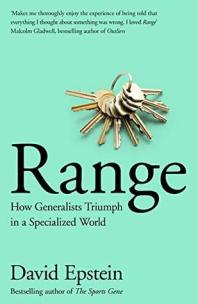
- Discussed how Nobel laureates and creative types are often generalists that spend a lot of time learning / making
- Stumble on new ideas or concepts in their work
- Generalists aren’t bad – allow to see a different perspective and combine ideas
- Think “The Quants” – relationship between corn prices compared to research on _
- Discussed how Nobel laureates and creative types are often generalists that spend a lot of time learning / making
- Deb DeHaas (@deborahdehaas), Chief Inclusion Officer, C4Corp Gov Deloitte (Women at Work)

- Discussed her mother, who had passed away at the age of 90 recently, who was told she couldn’t be an accountant
- Wasn’t her role – she pursued it anyhow and ended up being an engineer before quitting and being a community leader
- Worked in Gulf Oil’s accounting dept and helped her husband through med school
- First councilwoman in her town, elder at the church
- First councilwoman in her town, elder at the church
- Deb started at Andersen until it folded, worked for only one woman but she was taught there were no barriers
- Discussed her mother, who had passed away at the age of 90 recently, who was told she couldn’t be an accountant
- Bentley Hall (@bhallca), CEO of Good Eggs (Wharton xm)
- Mitch Berg, CTO of Vroom (Wharton XM)

- Alex Salkever (@alexsalkever), Vivek Wadhwa, authors “Your Happiness… Hacked” (Wharton XM)
- With Stew Friedman, finding the middle ground of tech with children / teenagers and the happy medium
- How is it that we find some things appealing but others are a burden
- Facebook being a publishing agency – aren’t they responsible for what the product? “Newsfeed” example.
- Google Maps or Waze as a hindrance at the local level – dangerous, maybe?
- Extremely valuable, still, in new places / out of the country, especially
- Different, maybe, for walking if alternative is talking and communicating with others
- Extremely valuable, still, in new places / out of the country, especially
- Problem with Facebook / Whatsapp – Whatsapp unmoderated group chats and only requiring a phone number
- Encrypted, but what cost? Facebook – for Vivek, just limits to 1-way action
- Social media as killing people – think India’s problems
- Ed Sim (@edsim), FP @ Boldstart Ventures (20min VC 092)

- LivePerson, GoToMeeting are 2 of his biggest investments as lead, exited / public
- Started a fund in 1998, DonTreader Ventures – left in 2010
- Idea was to bring SV style to NY – VCs would look at financials / models, but they looked at people and product – focus on markets
- Most investors were corporate but cratered after 2008
- Started a new seed fund for sticking with what he knew as well as recognizing a shift in 2007 for open source and cloud – consumer-based
- SaaSify vertical markets with GoToMeeting founders who wanted to do new things – $1mln, $1.5mln
- Enterprise people were looking to get a market for small ~$1mln investments
- Hated starting a fund – “Fundraising sucks.” – Could find a great enterprise and tech entrepreneurs at seed stage – got $1mln and made 10 inv
- First 5-6 investments were less than $5million pre-$, sold 4 by 2012 – had option values for series A or being sold to strategic companies
- Entrepreneurs wanted to sell in those cases, but with cloud, definitely found that it was reasonable and cheaper to do SaaS
- First 5-6 investments were less than $5million pre-$, sold 4 by 2012 – had option values for series A or being sold to strategic companies
- First / second generation founders or single vs others – “No single founders”
- As the first institutional round, they’re first big money in. Last few investments were second or more founders – little bigger rounds
- If first-gen founders, funding rounds are smaller – deep expertise in their field (and have to be engineers building product)
- “Enterprise can be fucking hard” – have to know the industry – he has 20 years, partner has 10 and new partner as building 5 companies
- Why he went this route? Started at JP Morgan as building quant trading models as liaison Business QA between engineers and portfolio managers
- Derivatives models to real-time pricing models – feeds from Reuters or others, risk metrics and crank out the other side
- Enterprise was exciting to him
- Why he went this route? Started at JP Morgan as building quant trading models as liaison Business QA between engineers and portfolio managers
- Could take enterprise founders and redo or build a new company by changing the pain point – customers can be repeat because new pain point
- Harder to do that in consumer
- Leads come from founders – roughly 75% as recommendations from portfolio companies (wants to be first thought or call)
- Helps founders get their pick and decide where to go – if you have an analyst report, may not be a great market opportunity initially
- Environment of seed funding: Jeff Clovier of SoftTech as one of few microVC’s and now it’s 400+
- Just want to be hyper-focused and being nimble – main value add as understanding the cadence (2 founders coding together to selling)
- Stratification of VC – best ones have gotten so large that they can’t write small checks efficiently
- Entrepreneurs don’t want $5-10mil immediately out of the gate – mismatch, looking for less for less dilution
- Deal flow of crowdfunding: says sometimes they will leave $250k after leading for AngelList or building new relationships
- Jason Calcanis blog Launch Ticker, trend as rise of the developer (multiple people in company using same thing – buying licensing)
- Messaging as another interesting trend in the enterprise space – his most used app – Slack (SlackLine – private, external channels)
- Most recent investment – stealth investment in a repeat founder (founded and sold before) – security focused on developer
- Kim Wilford, General Counsel at GoFundMe (Wharton XM)

- Talking about joining, hadn’t considered nonprofit space
- For profit arm and the nonprofit
- Mentioning pushing marketing and following metrics for raising vs donations
- Can influence news stations and push for higher engagement
- Done almost $5bn in funding across 50 million donations
- Talking about joining, hadn’t considered nonprofit space